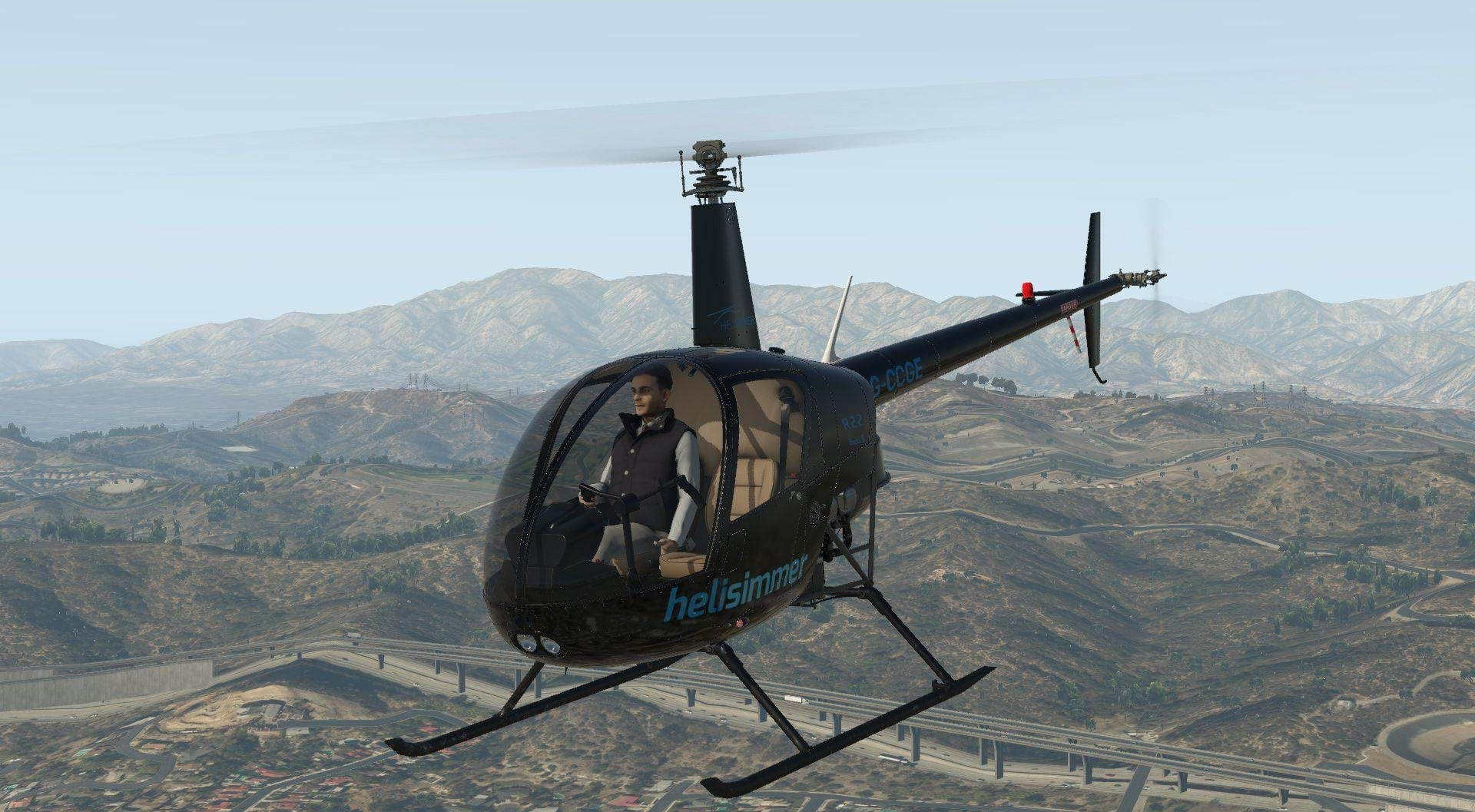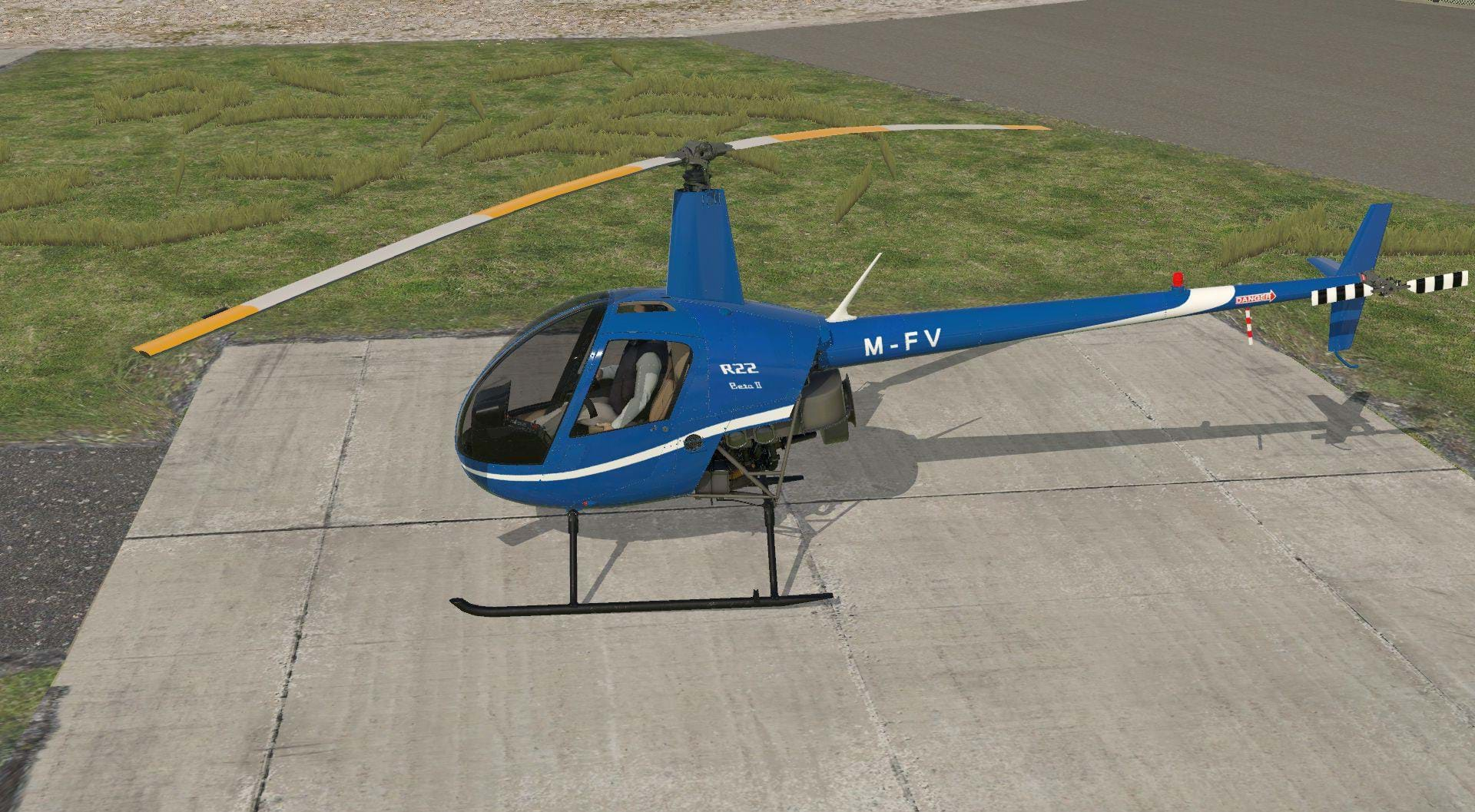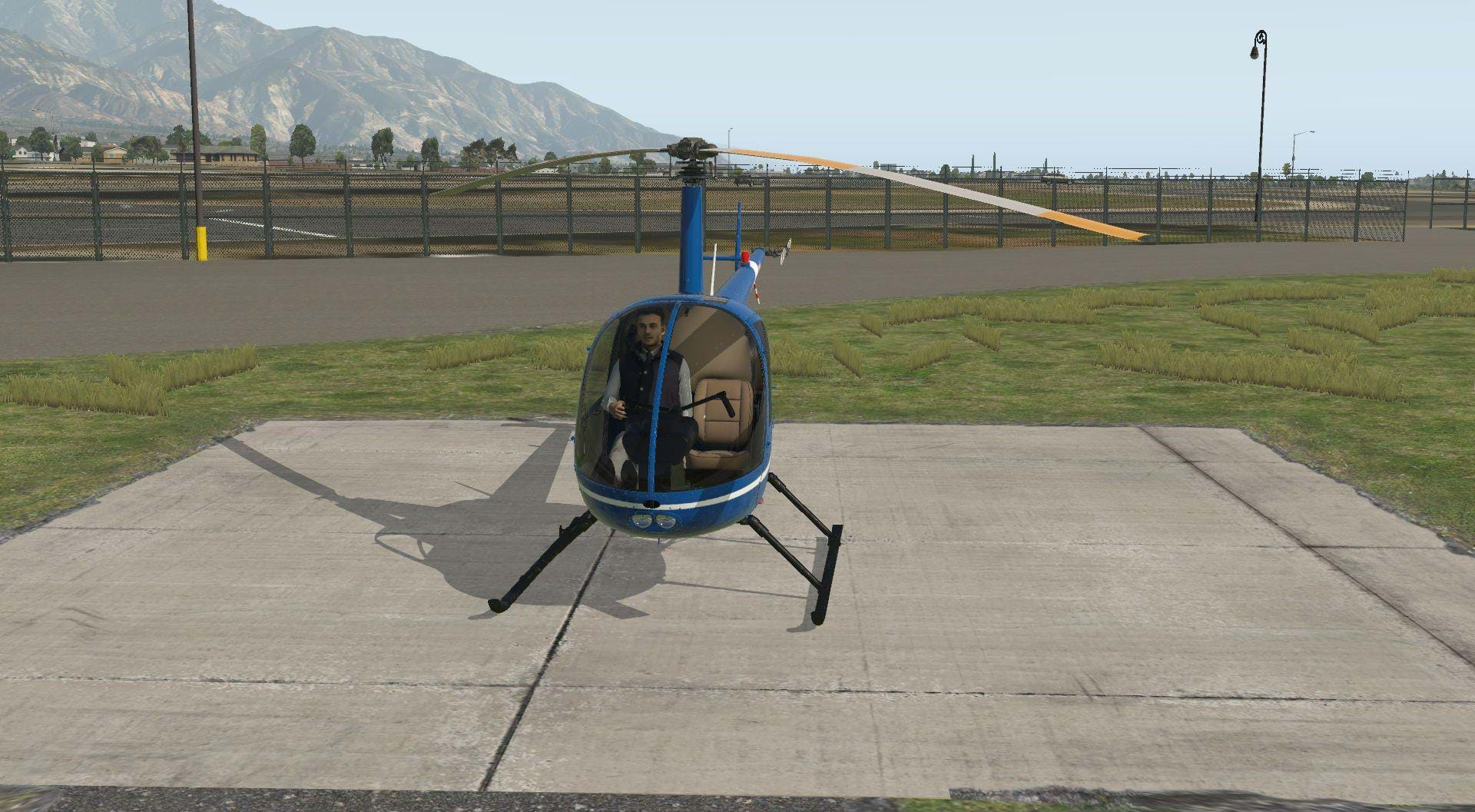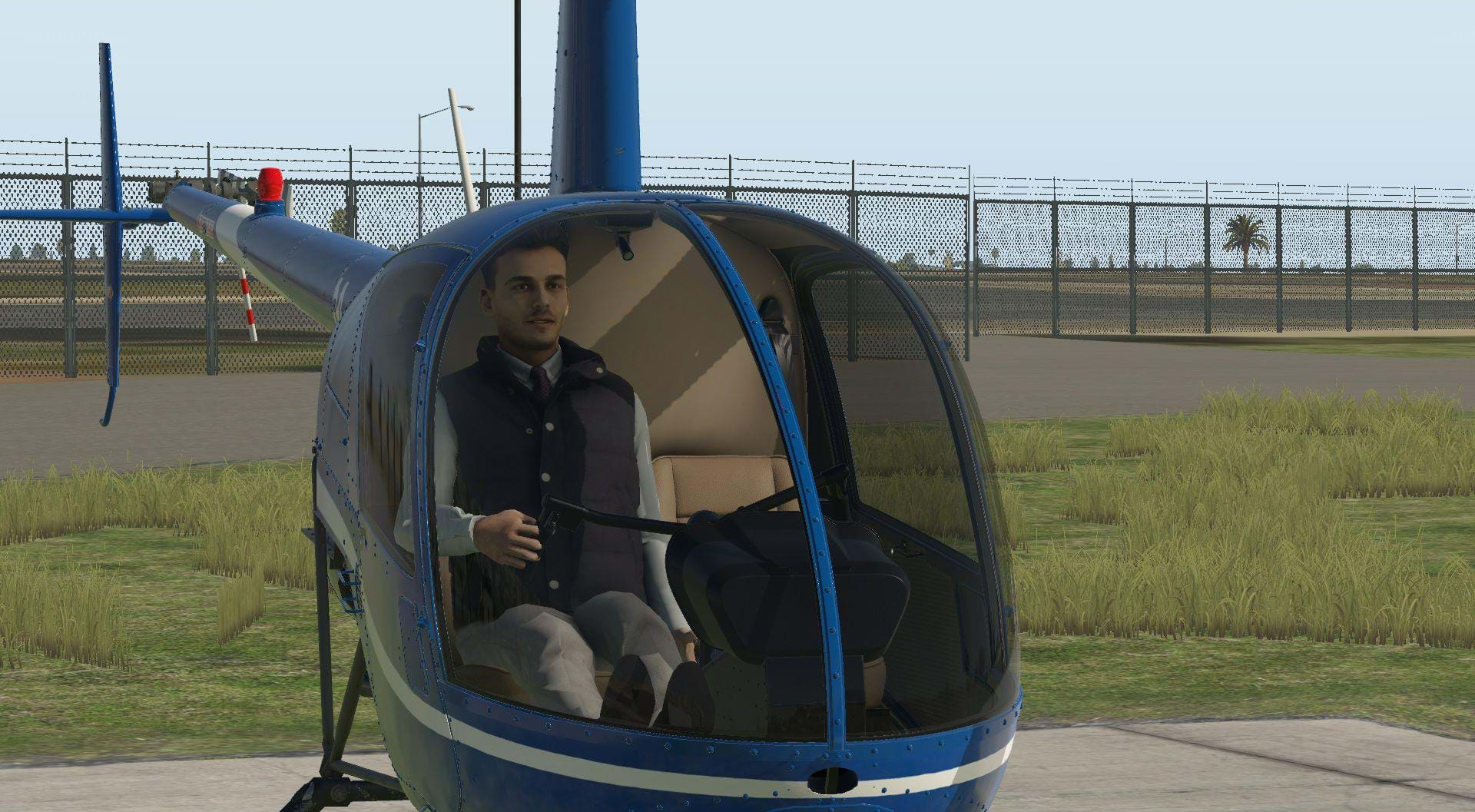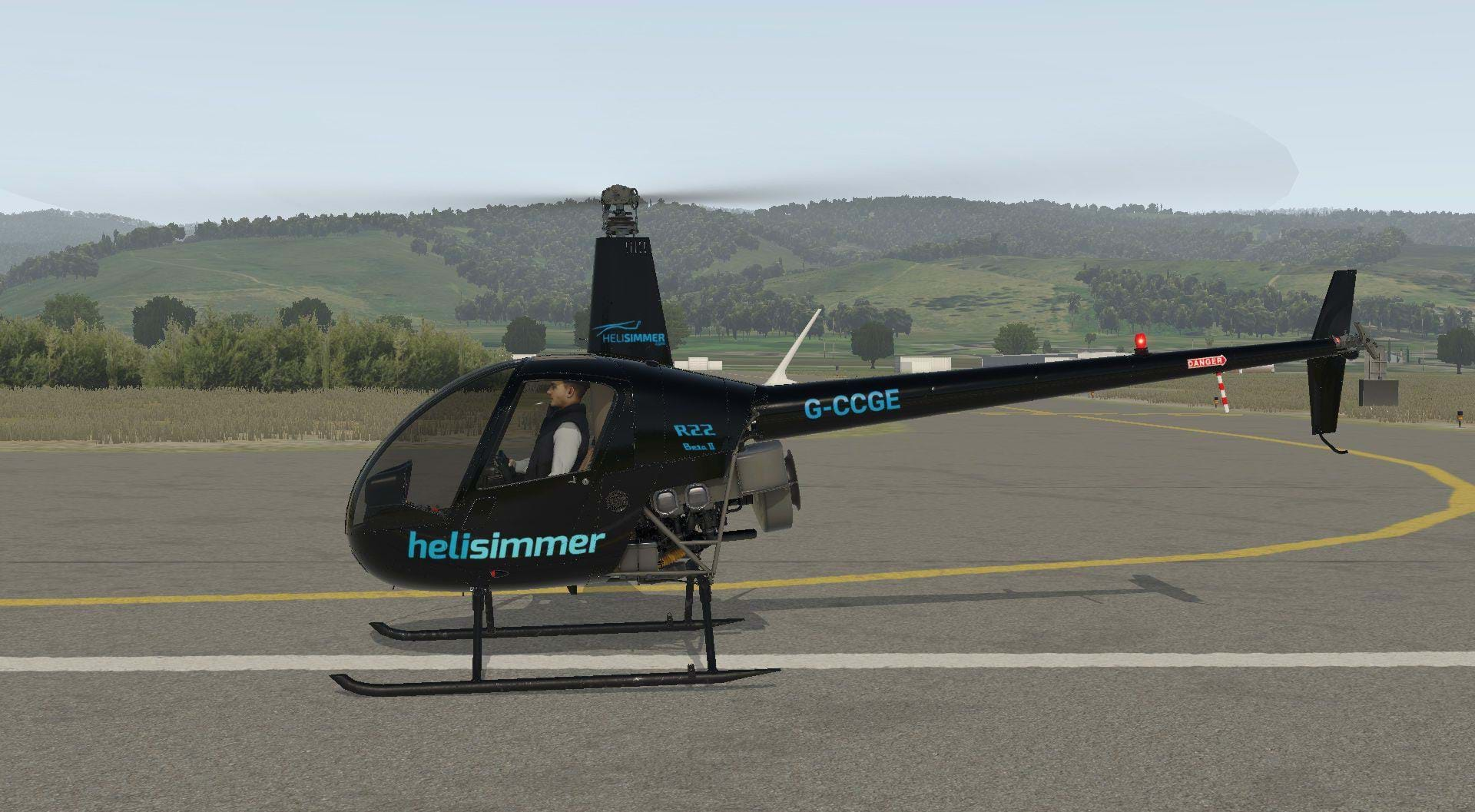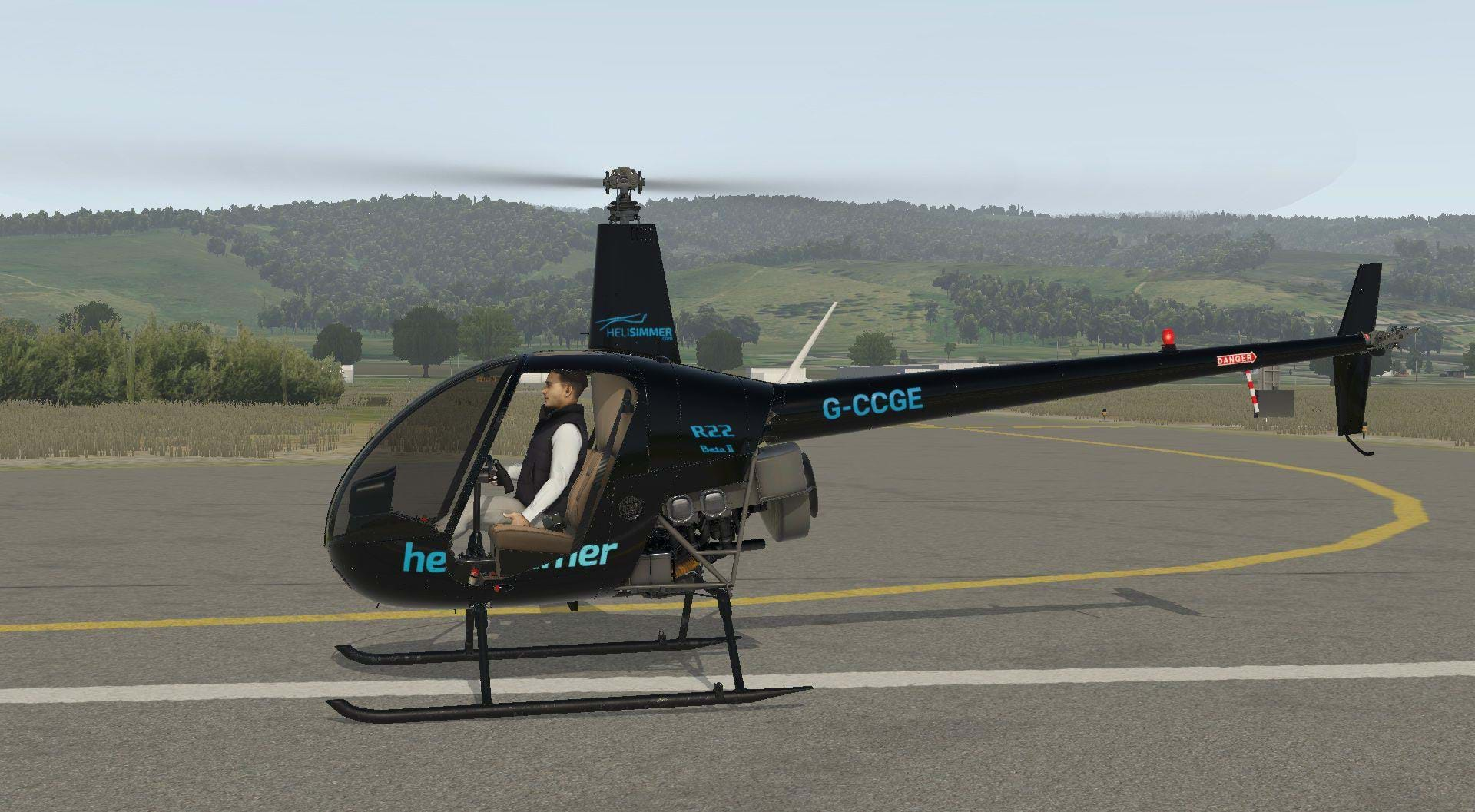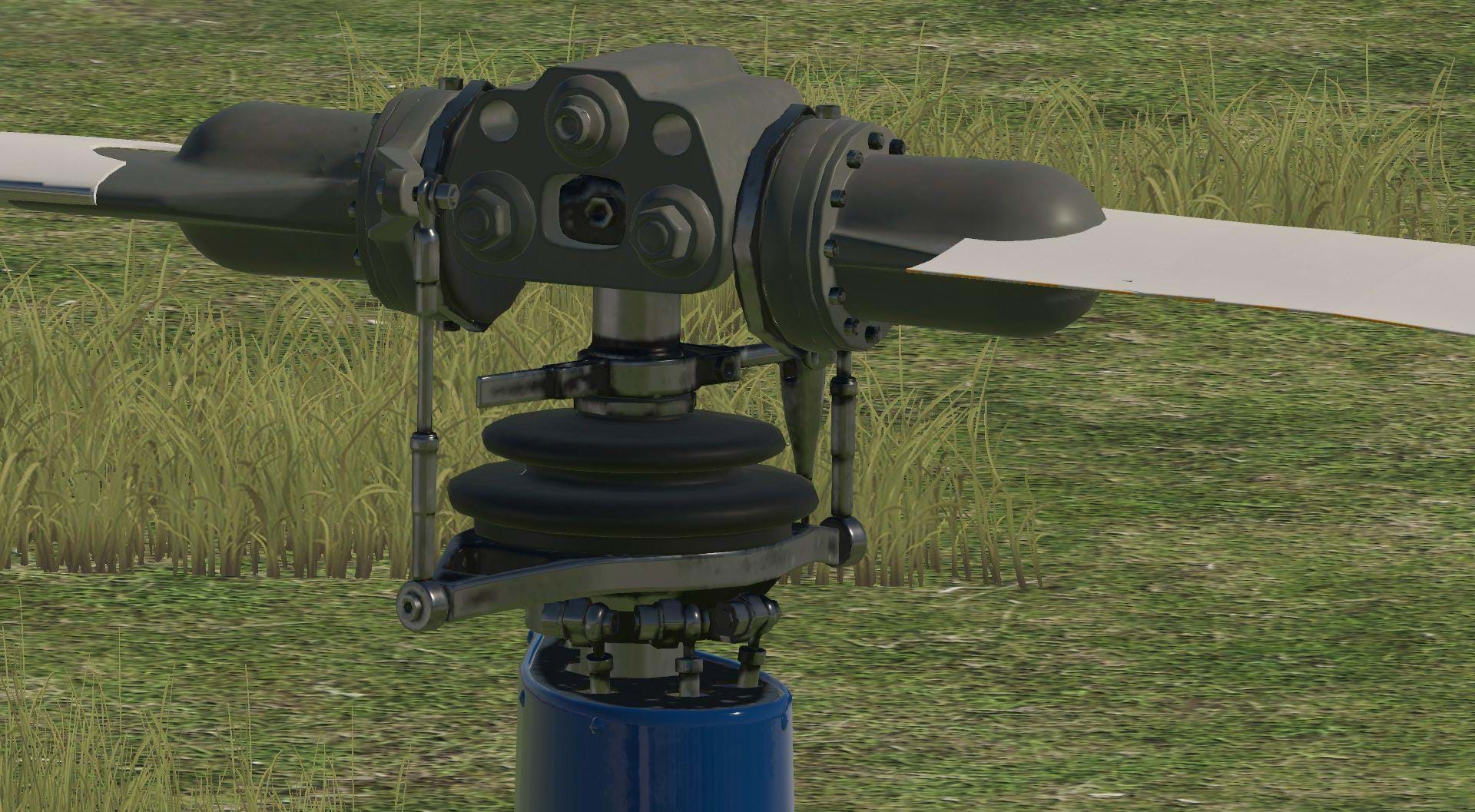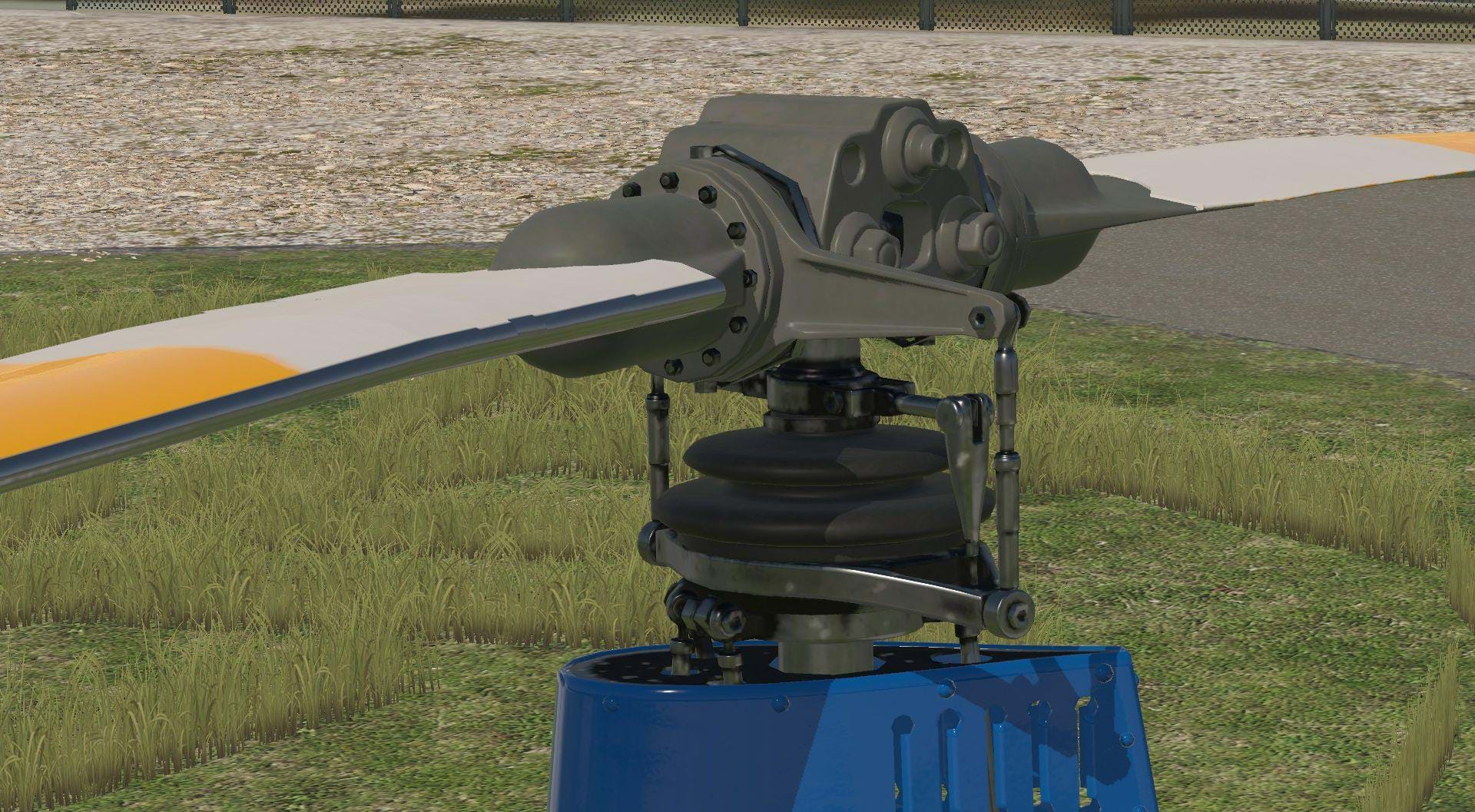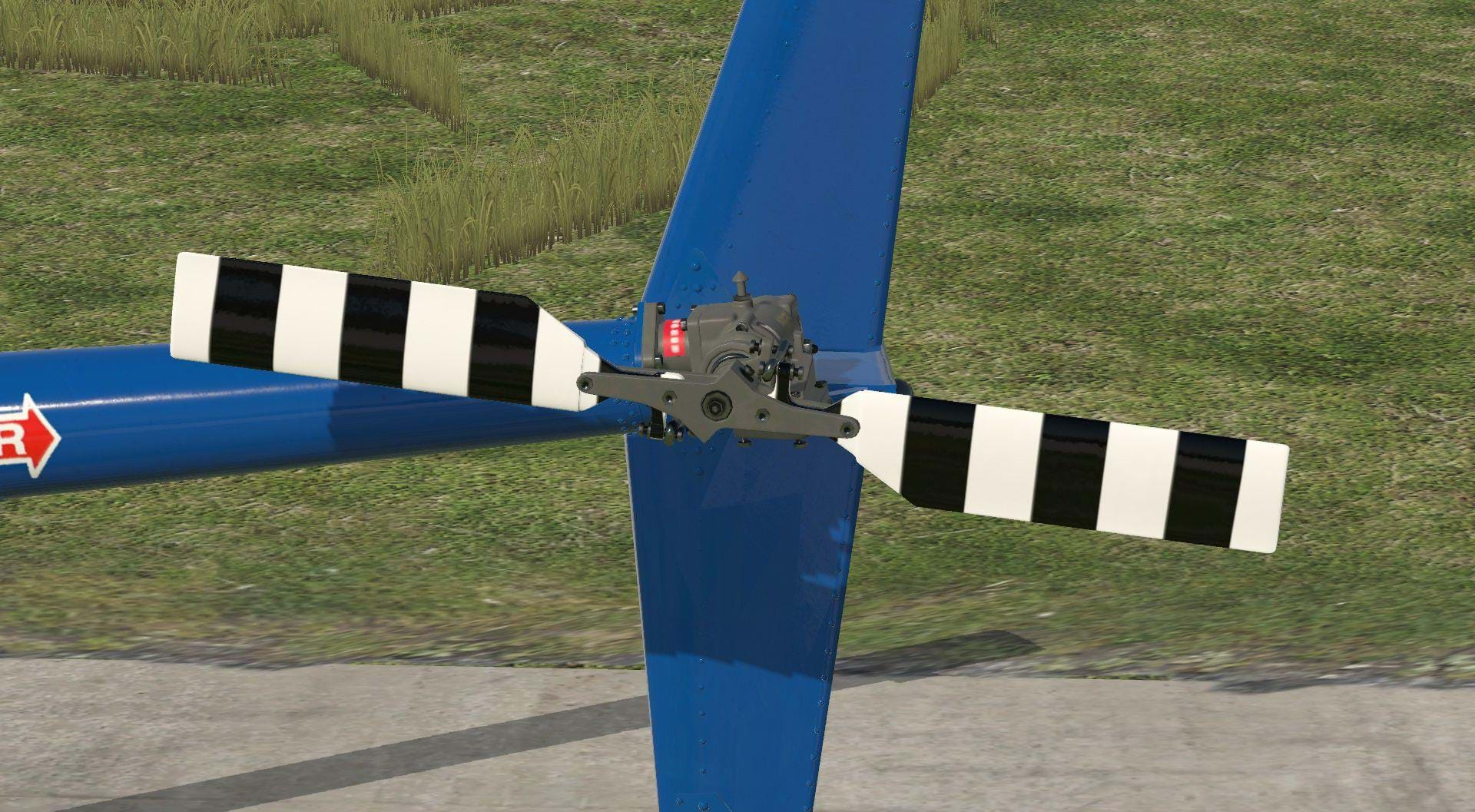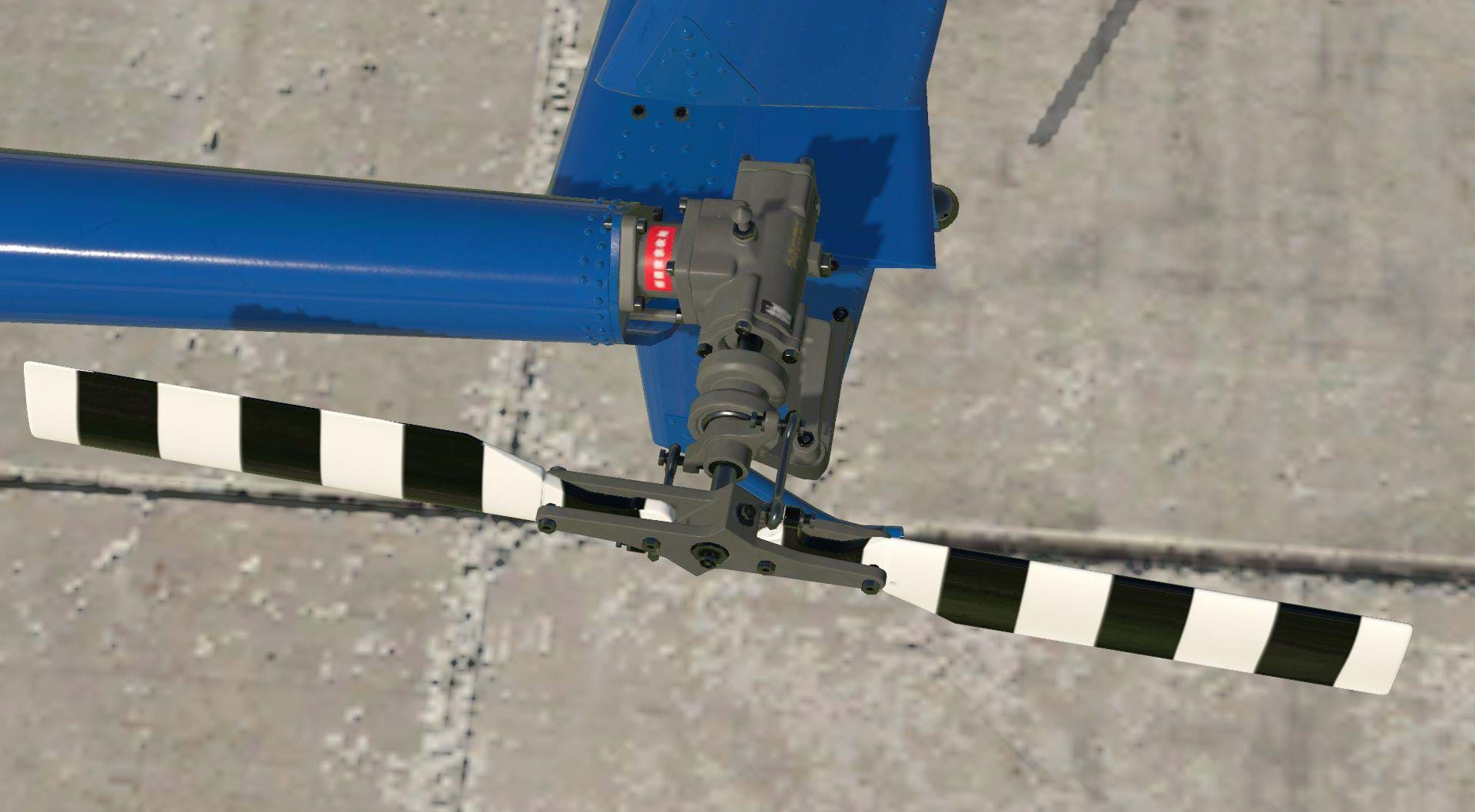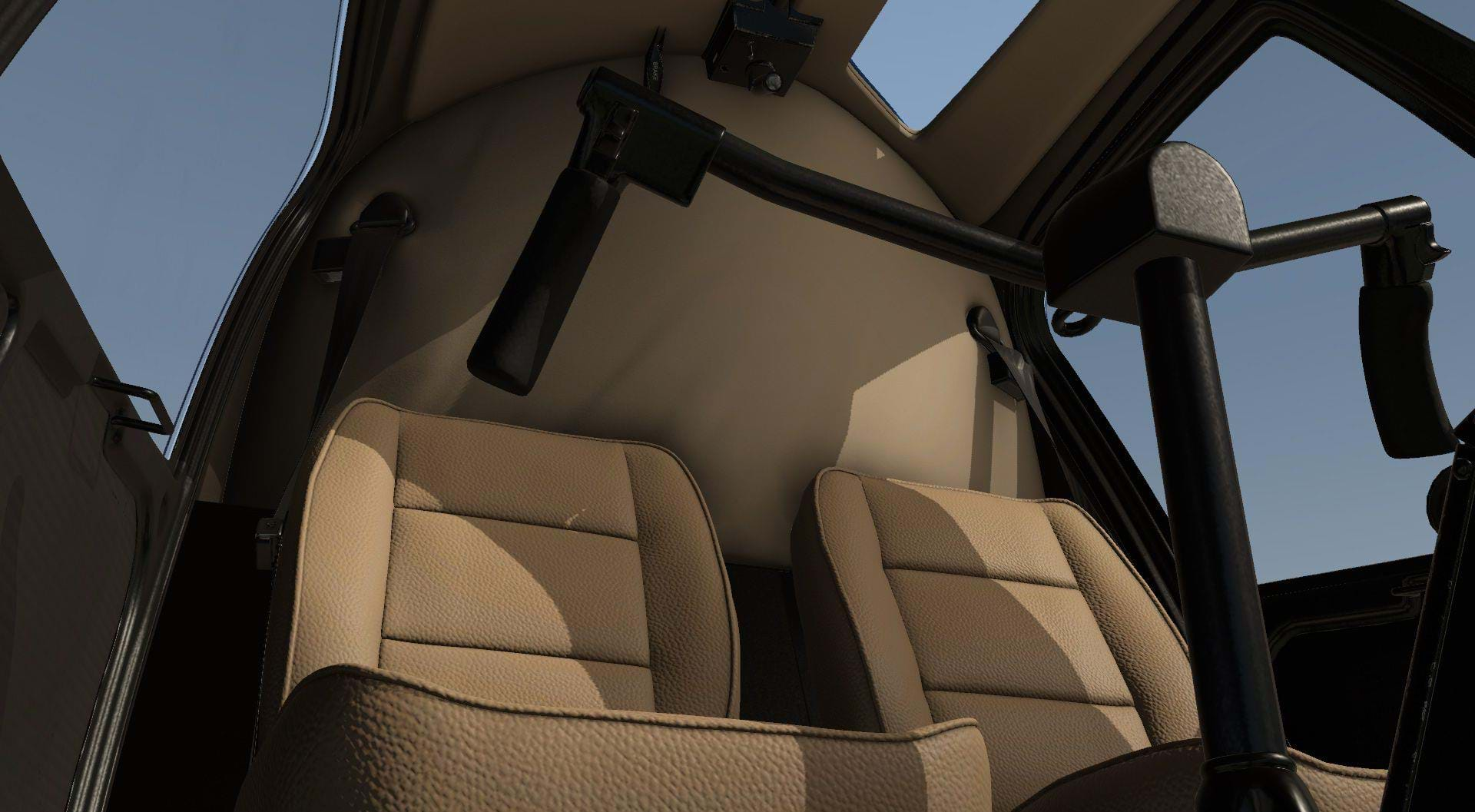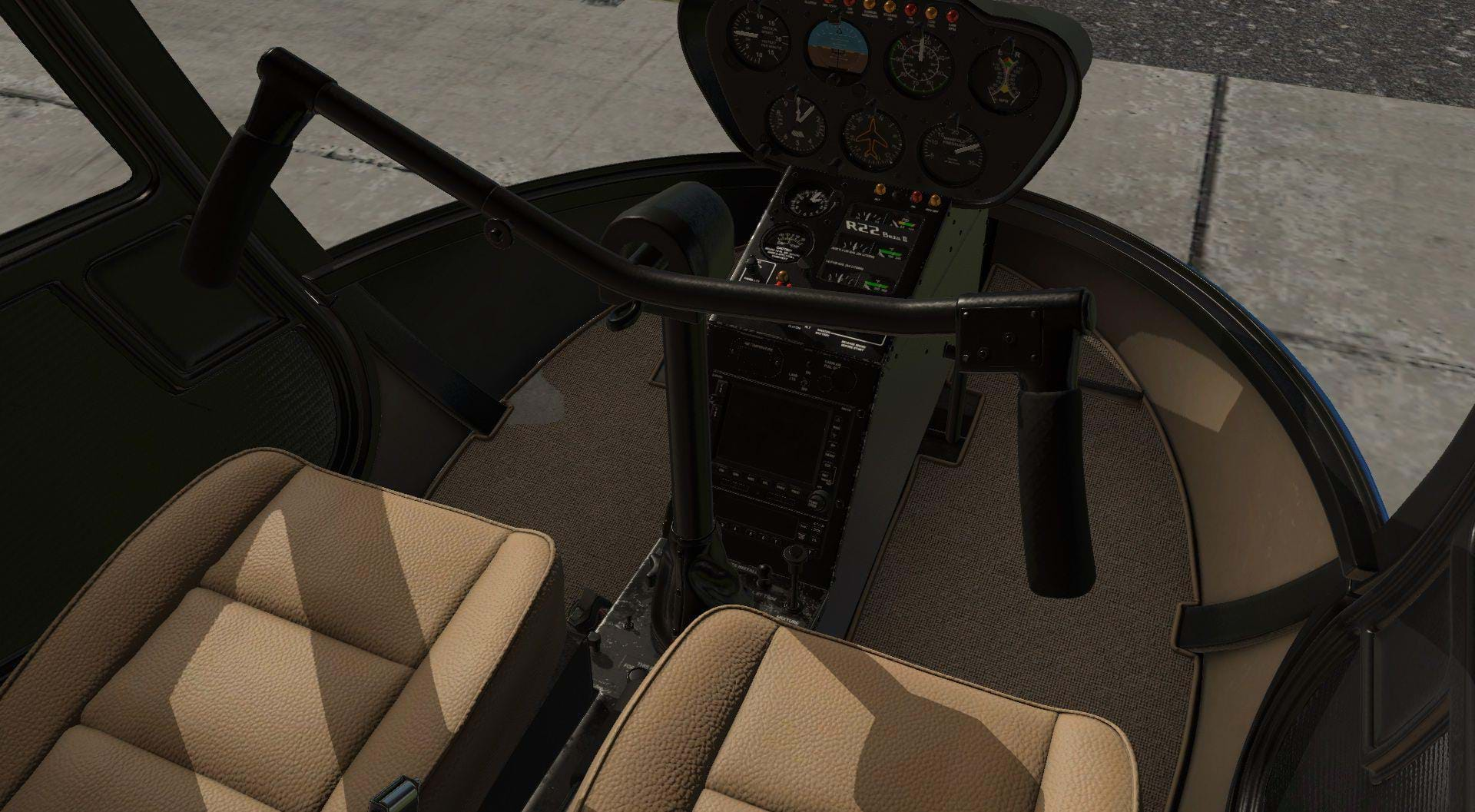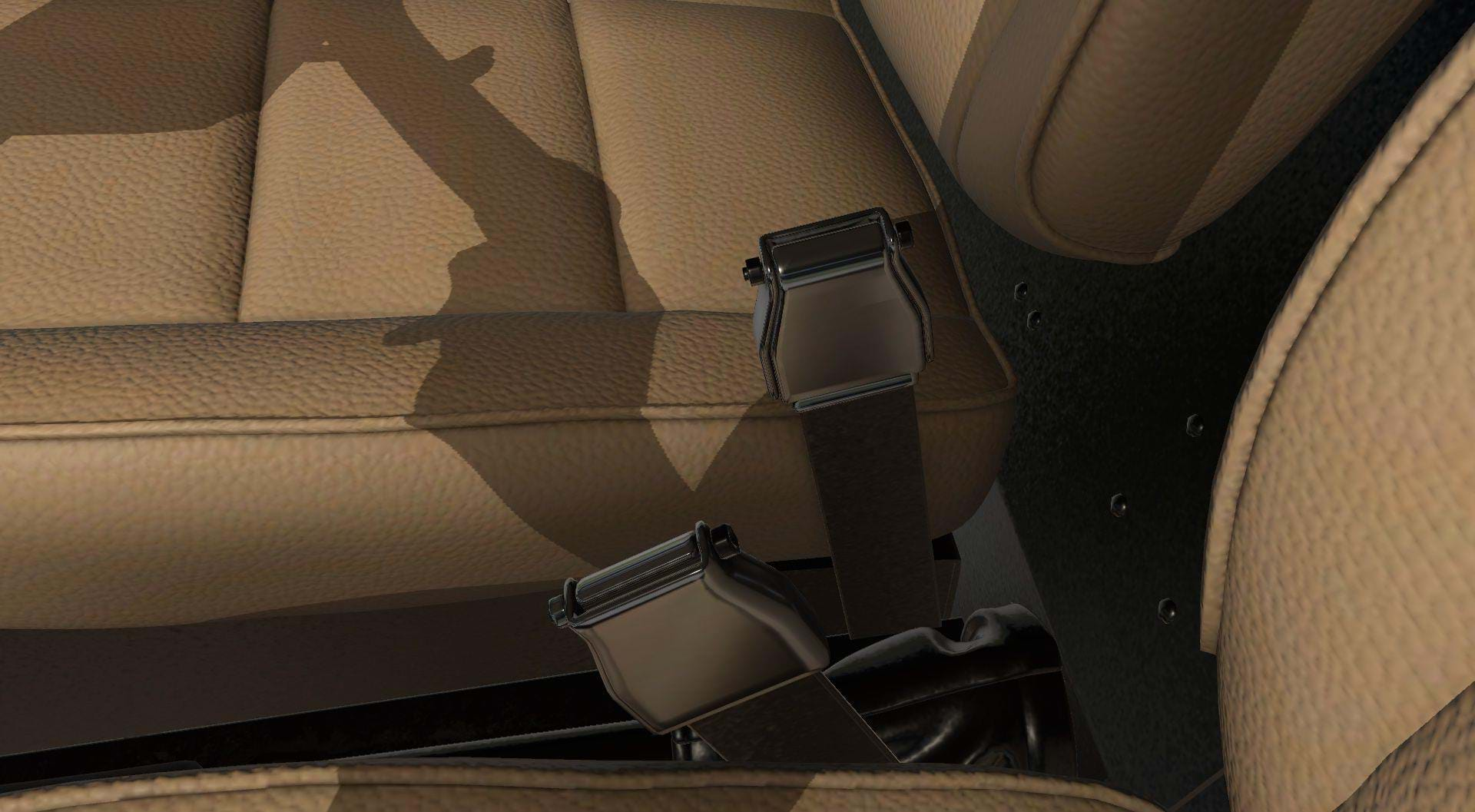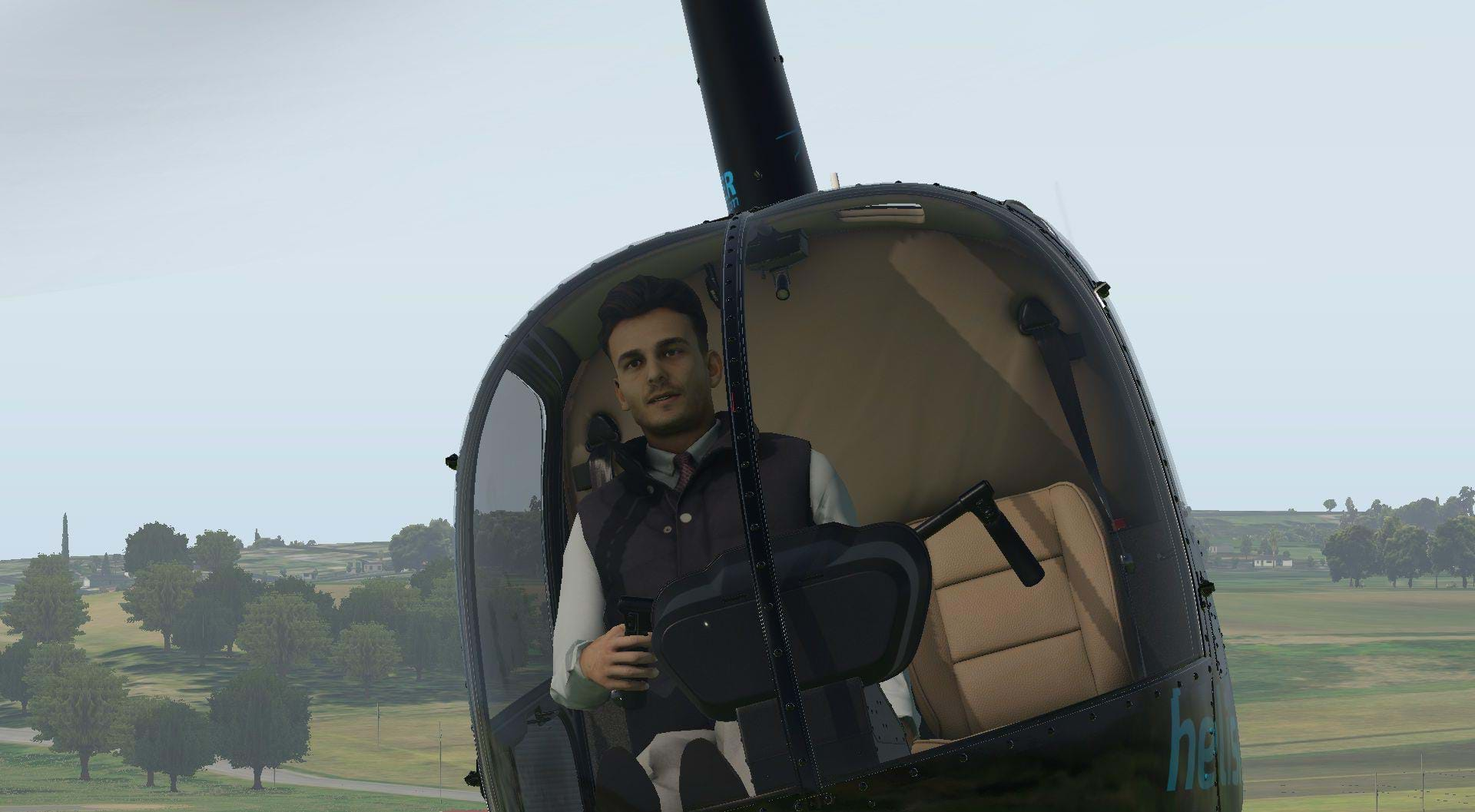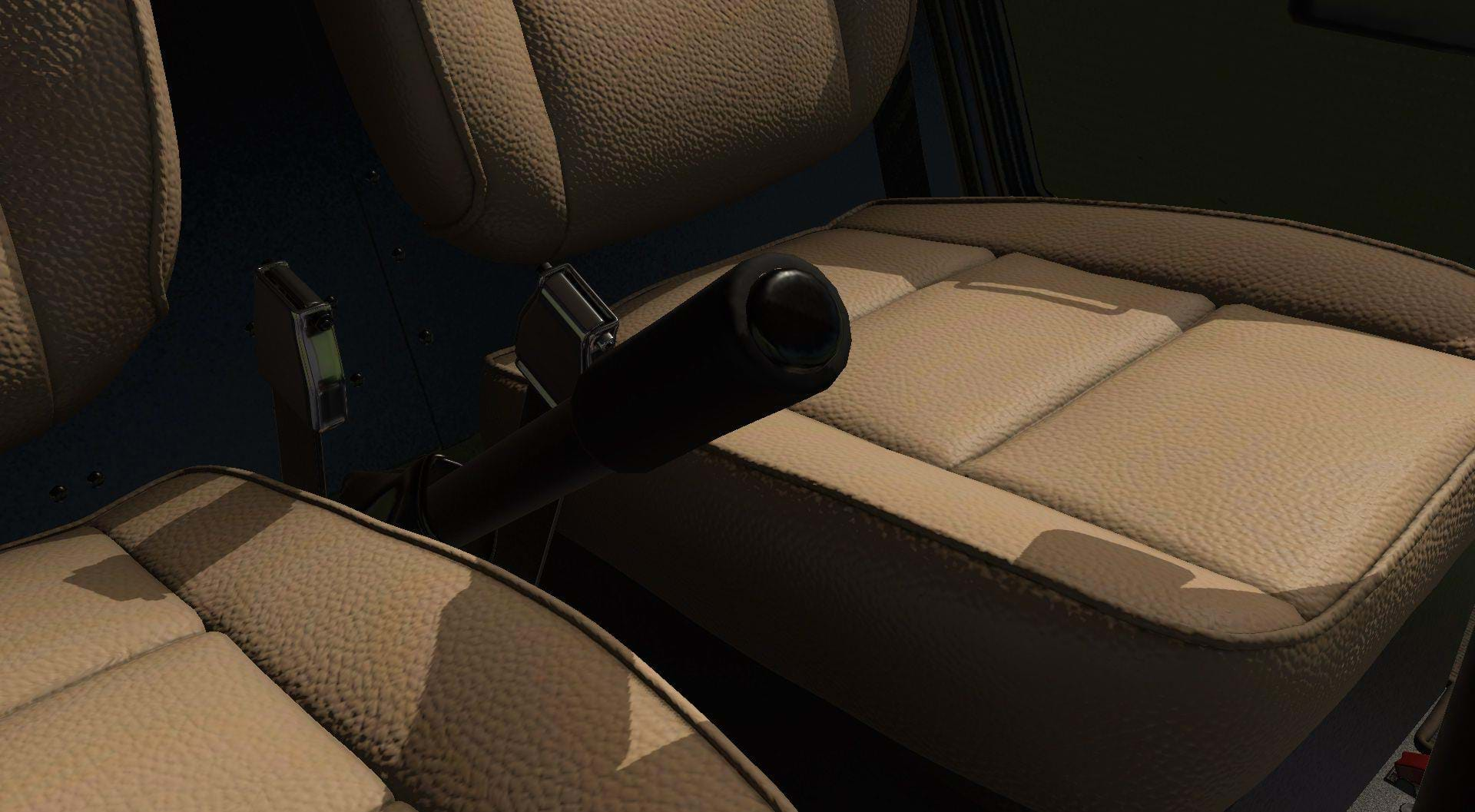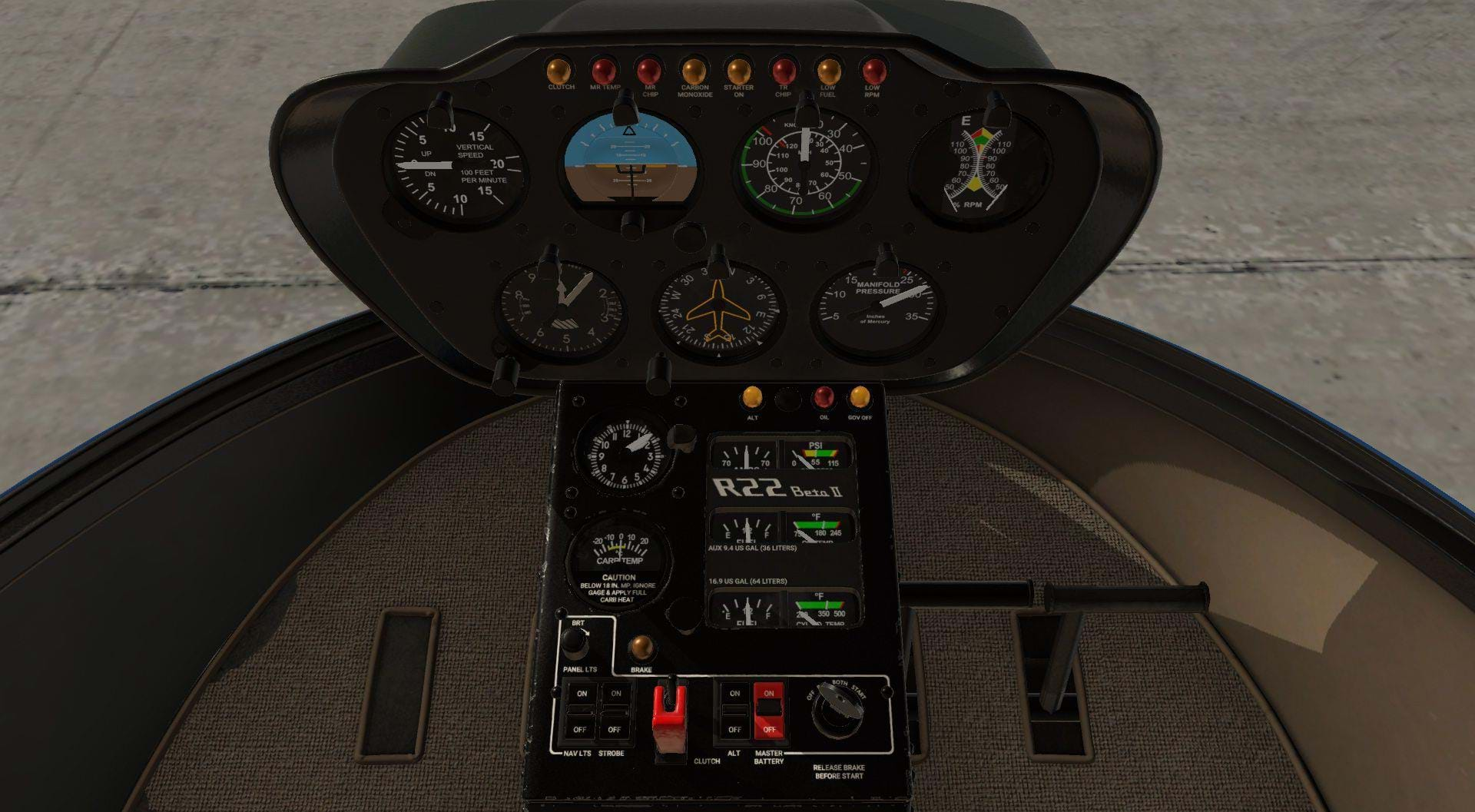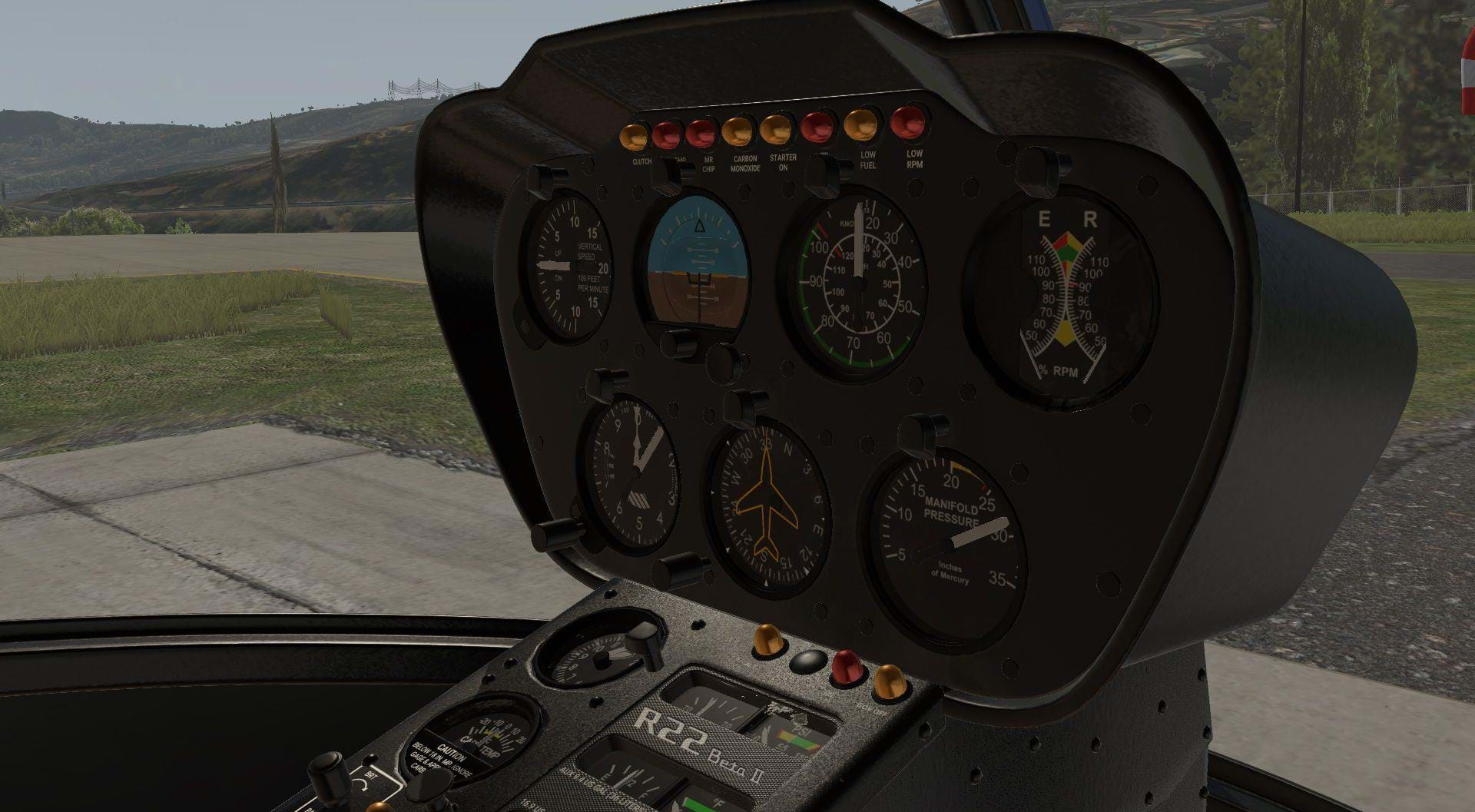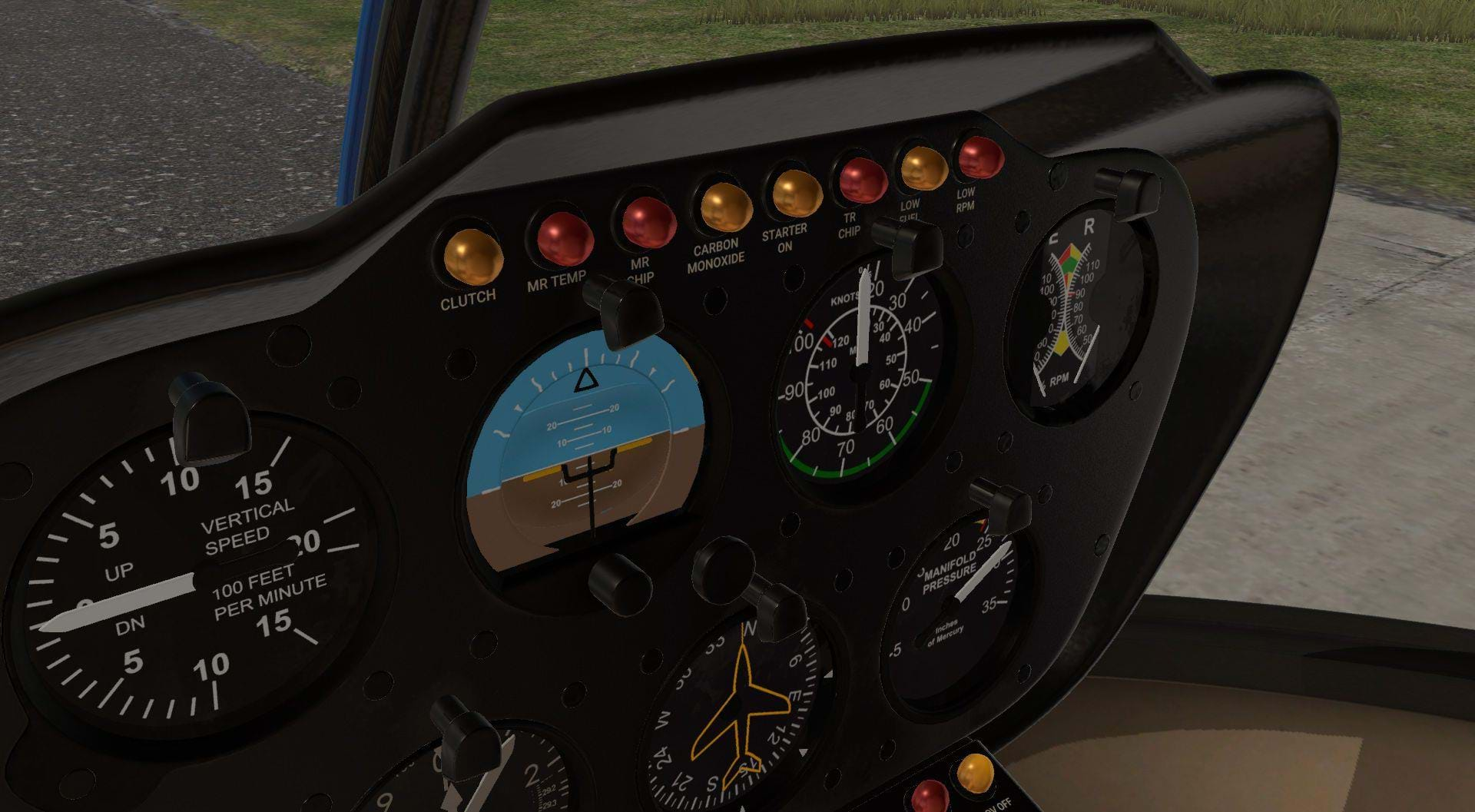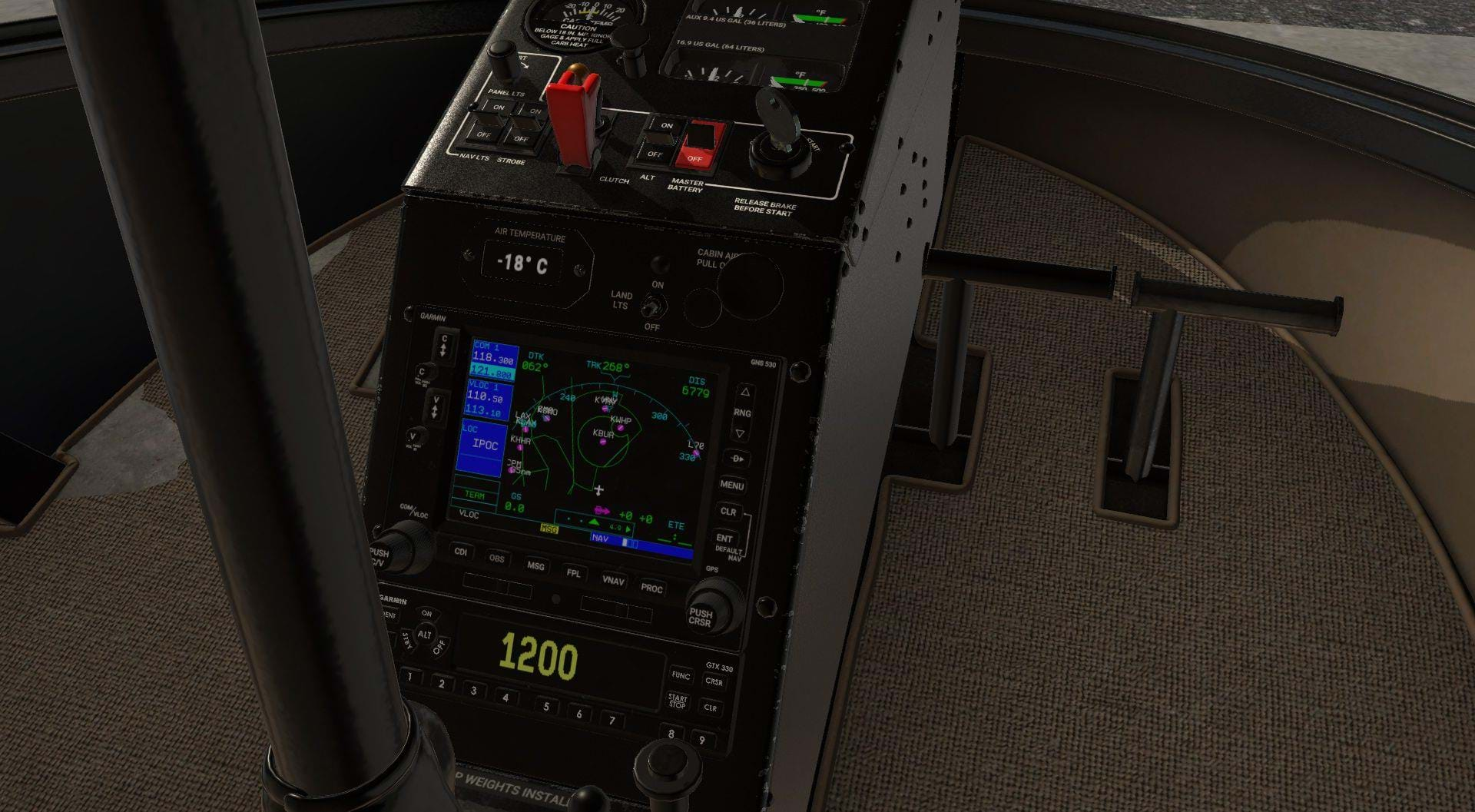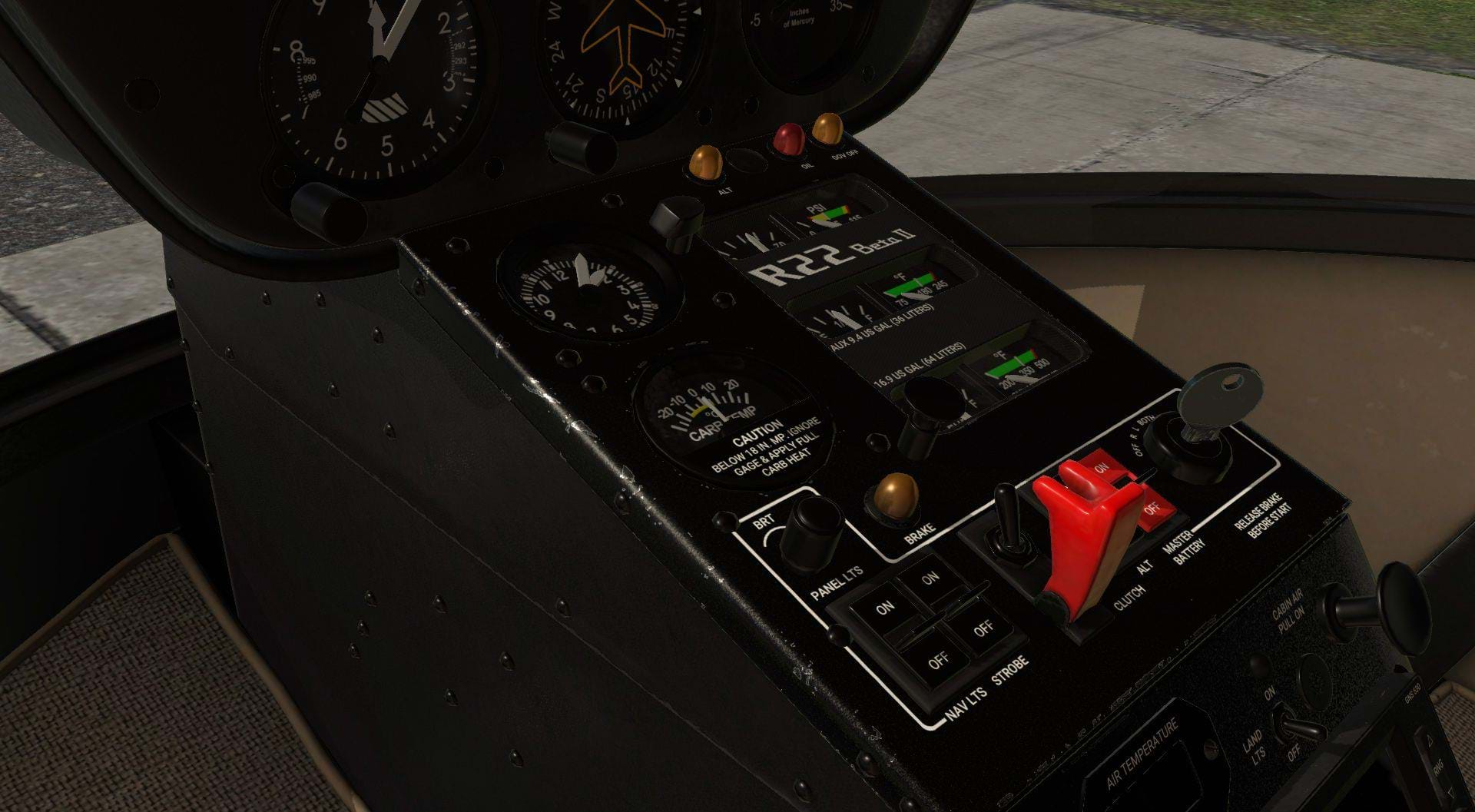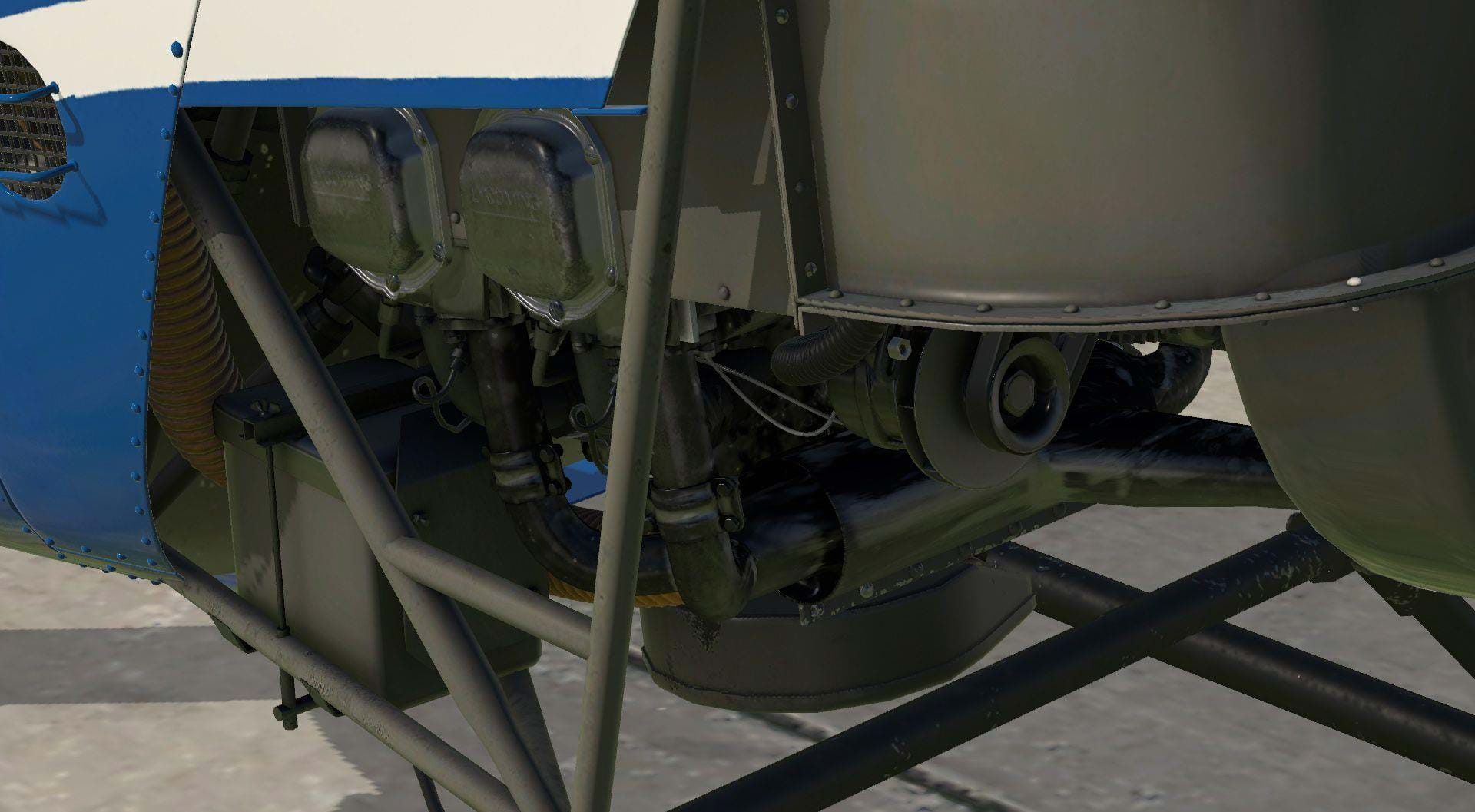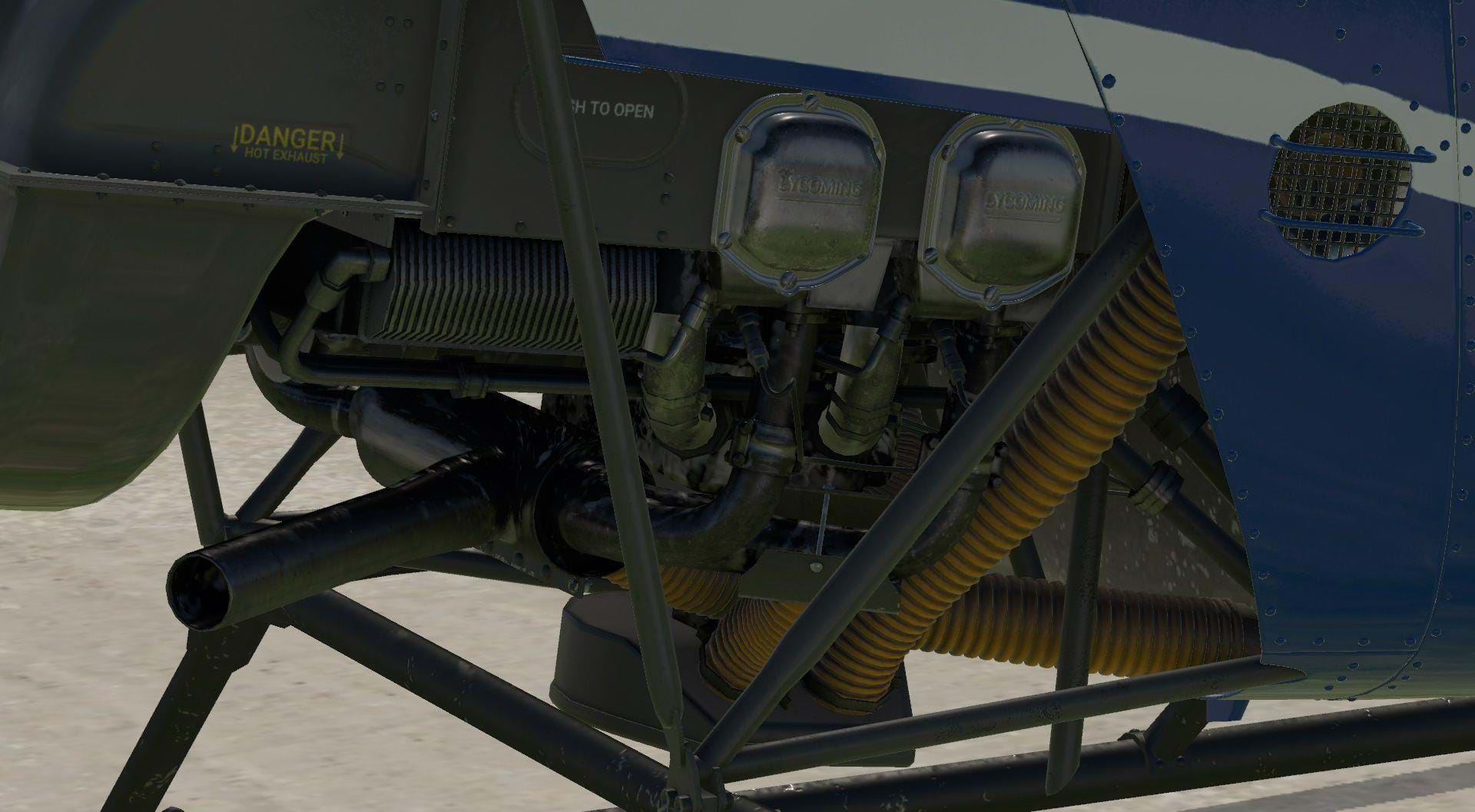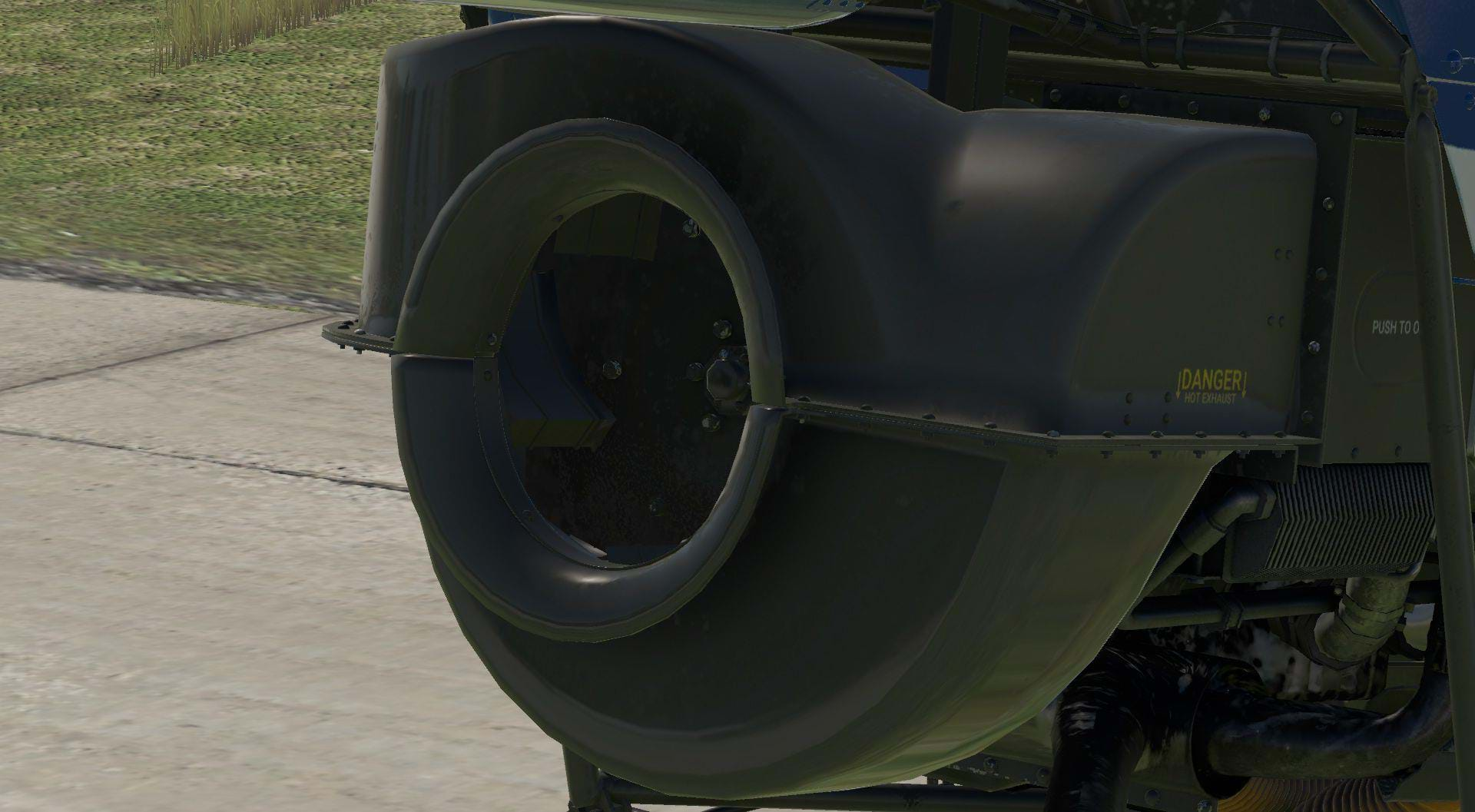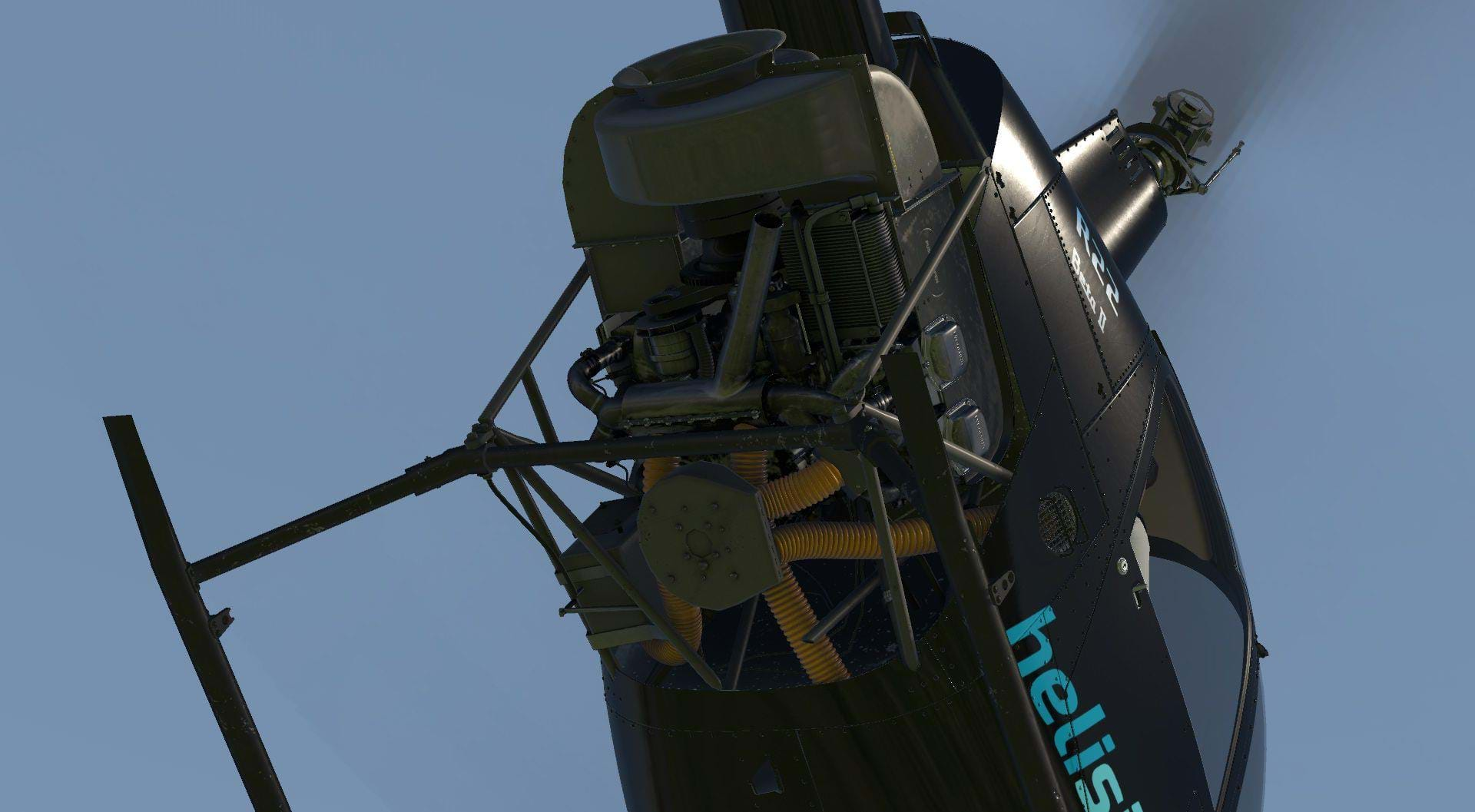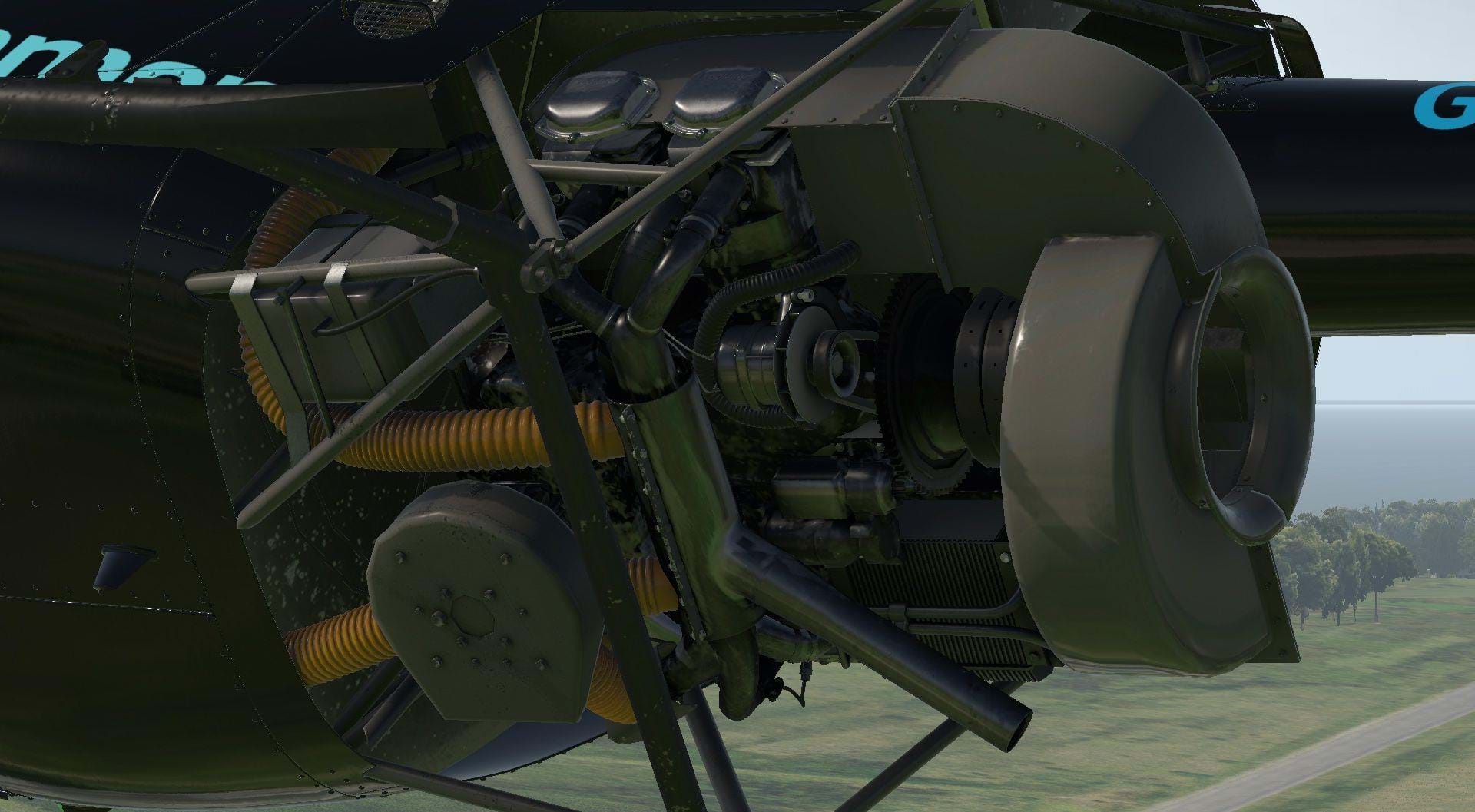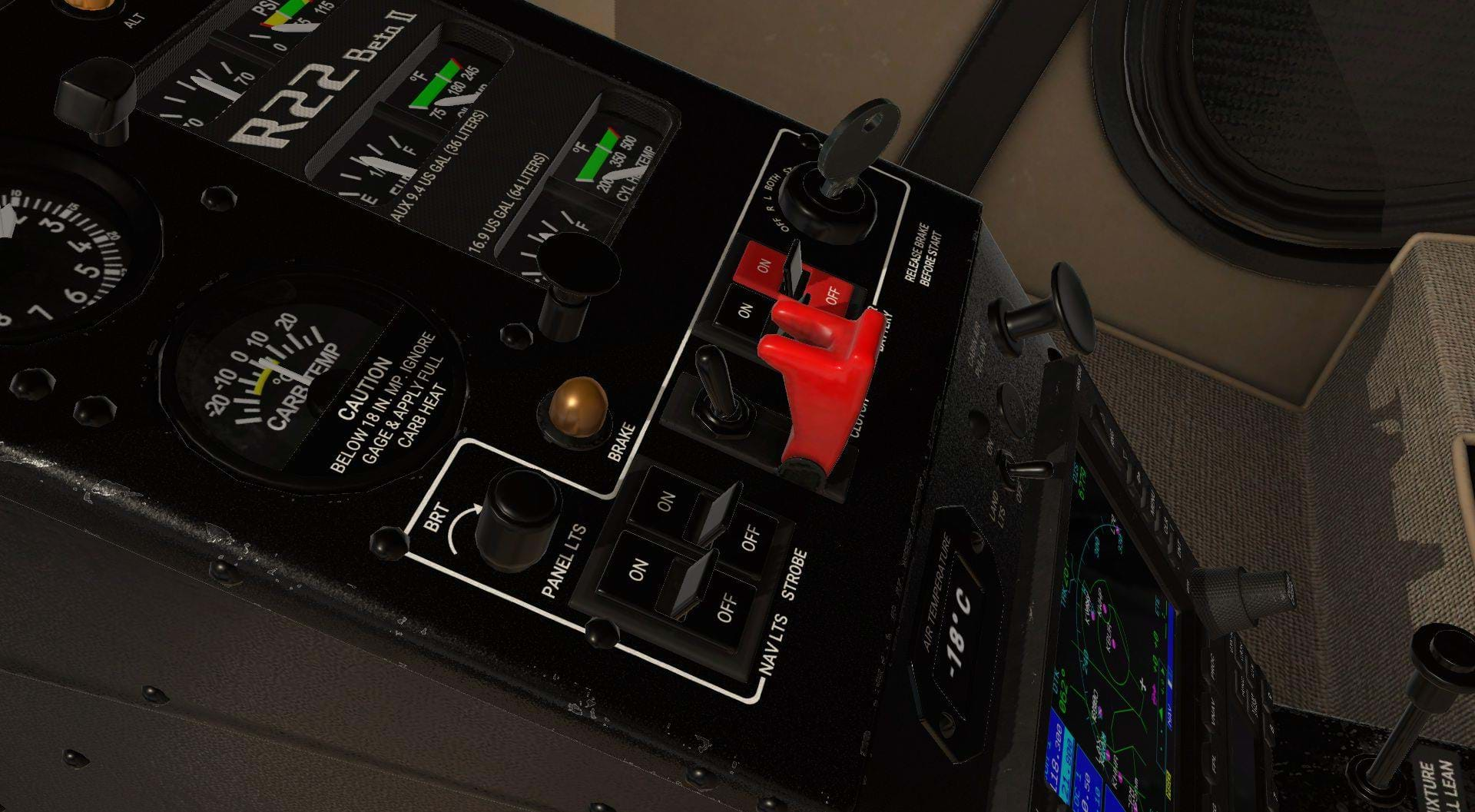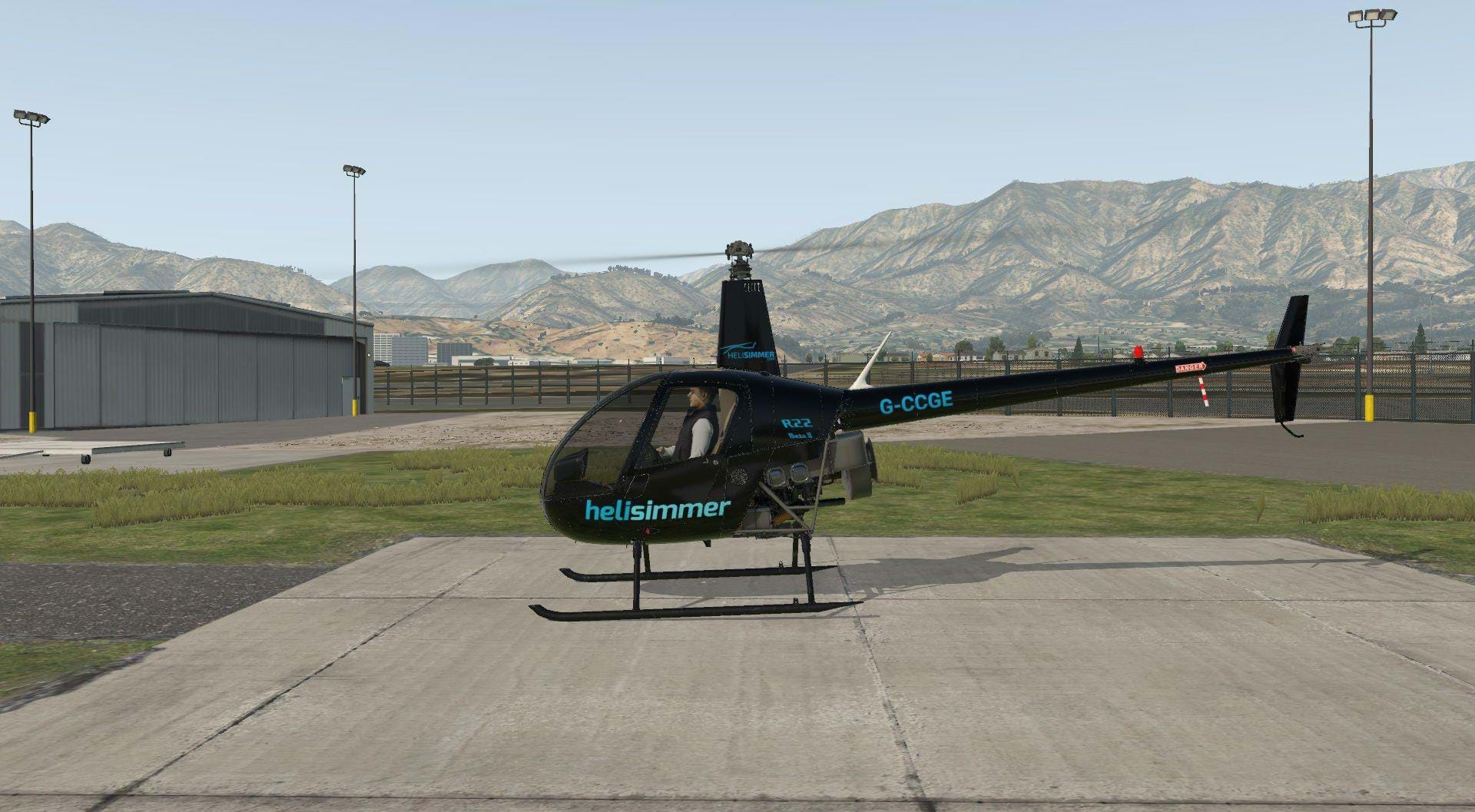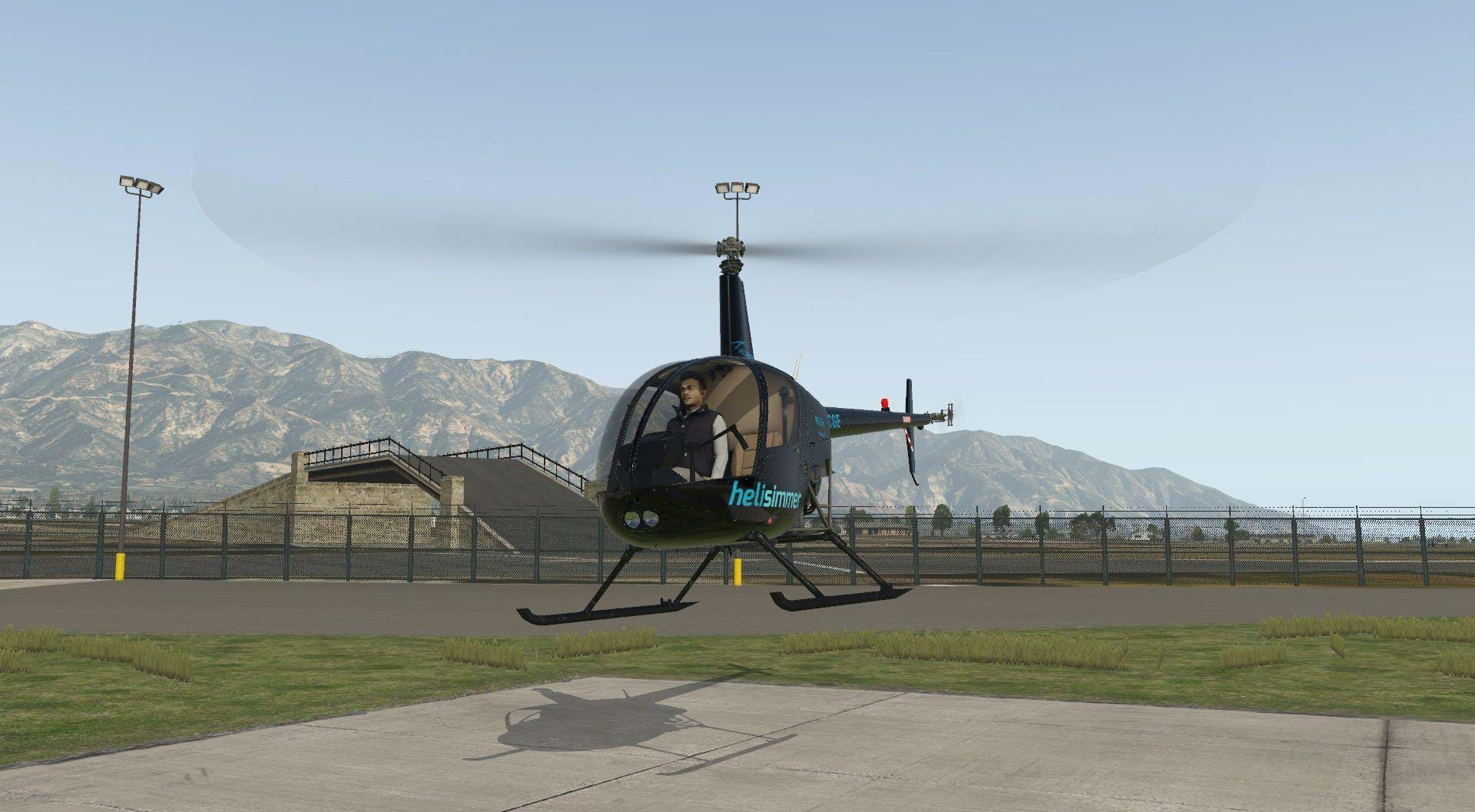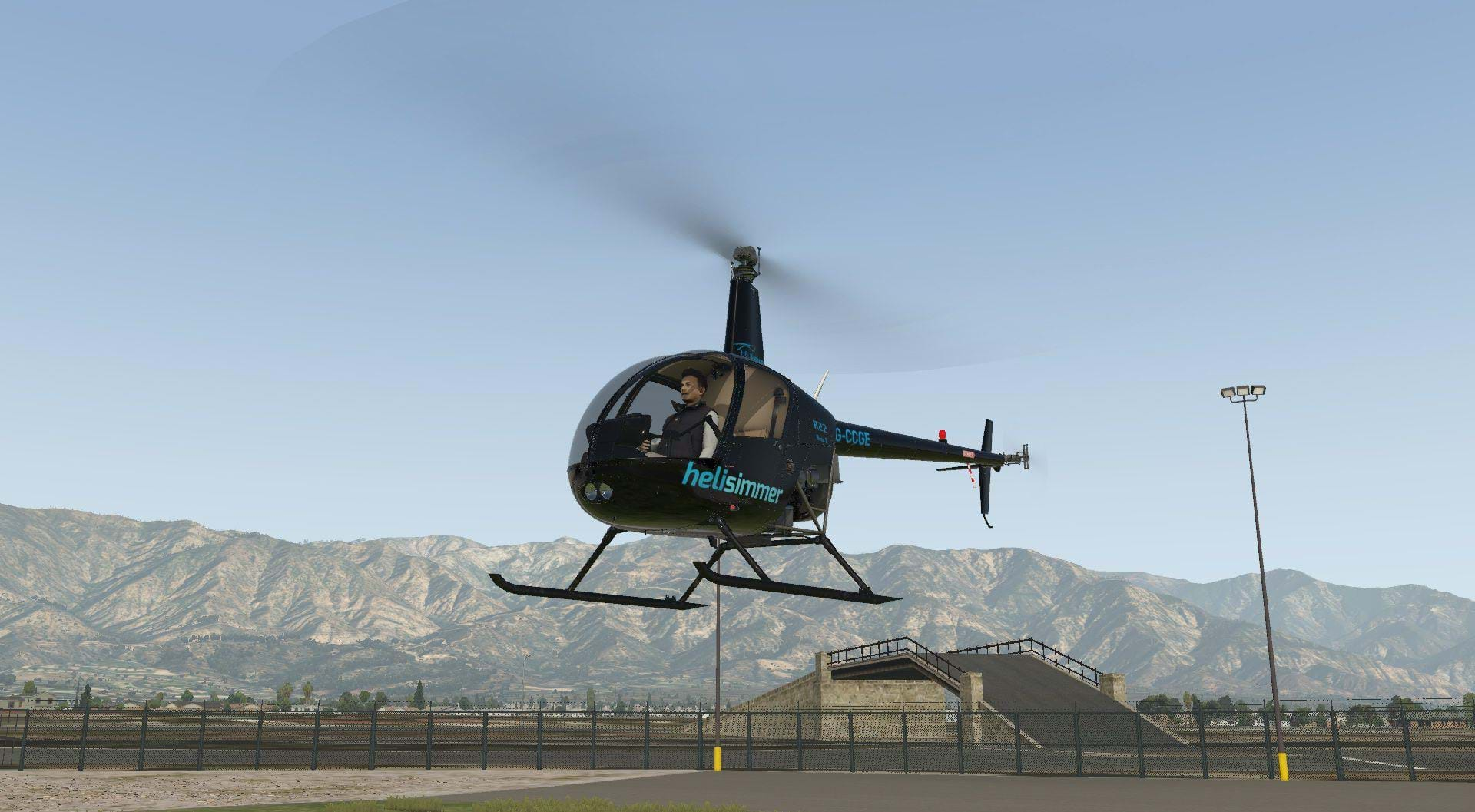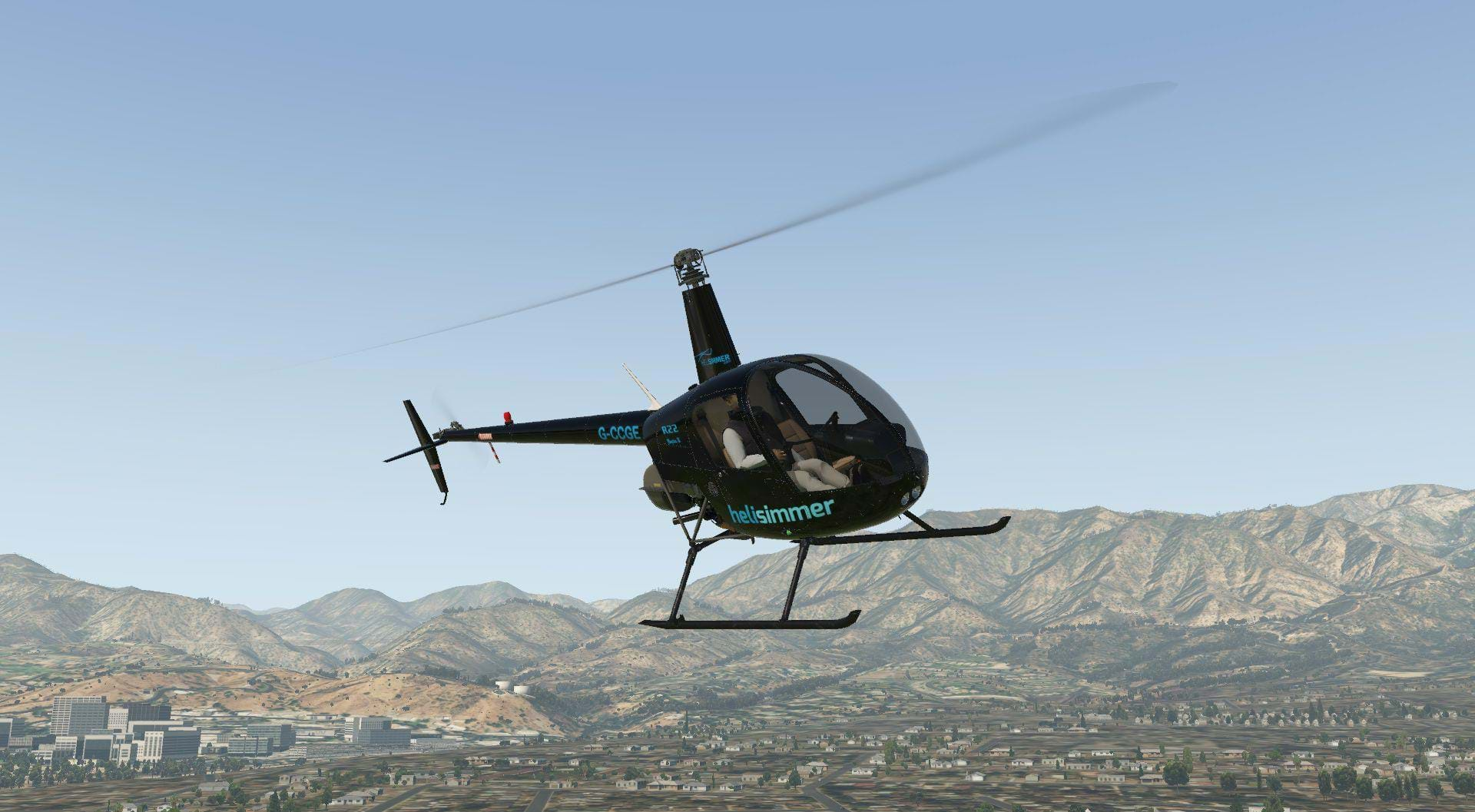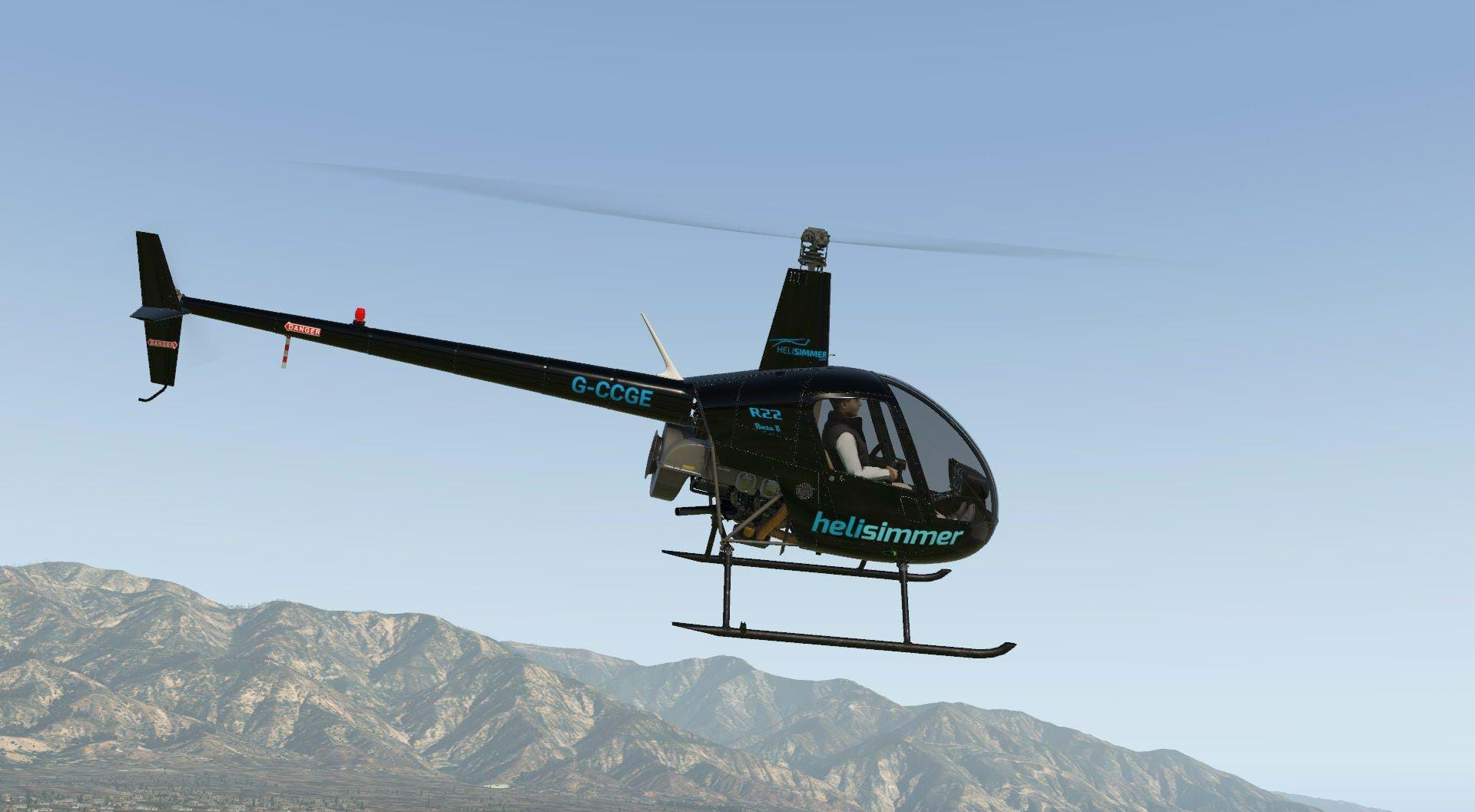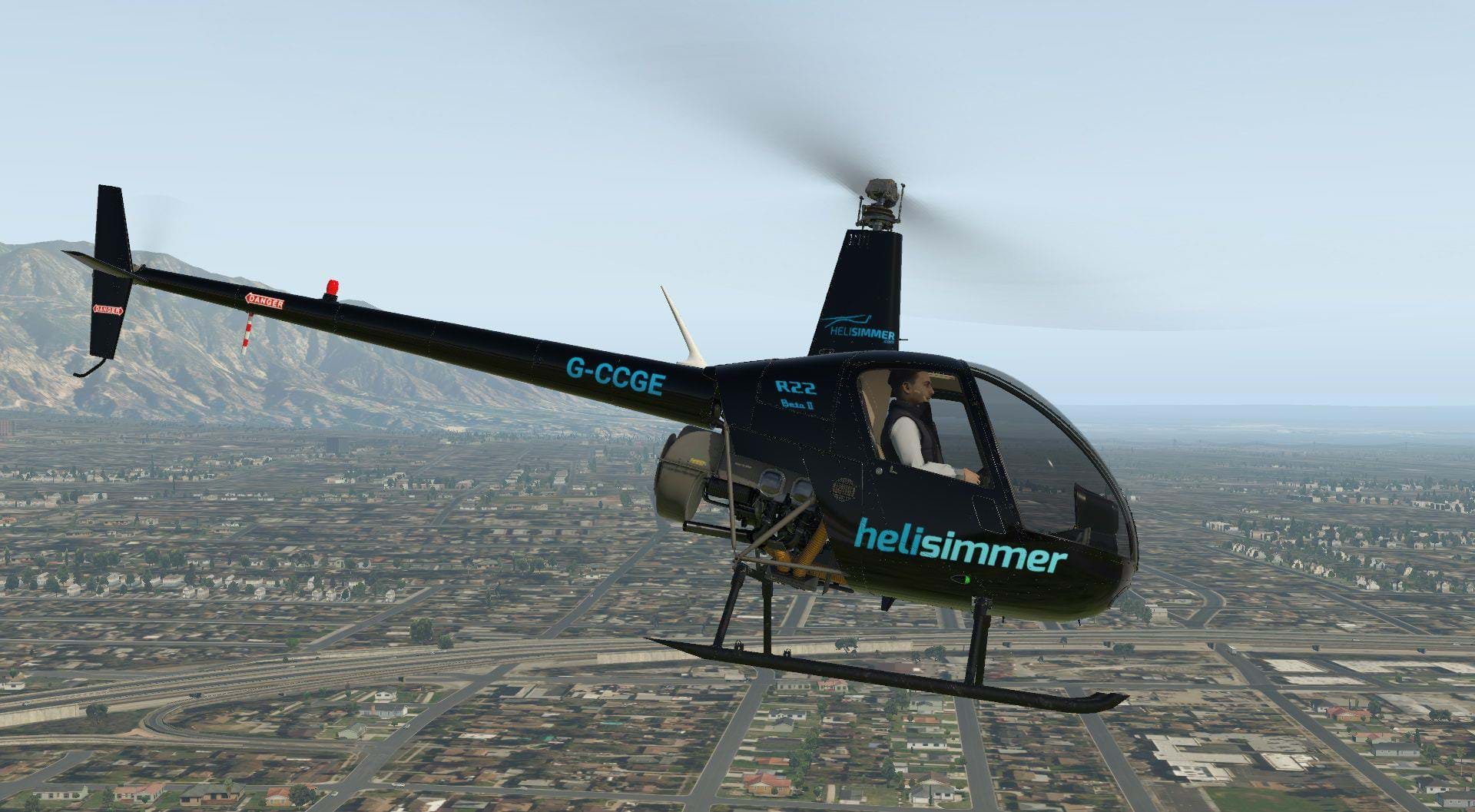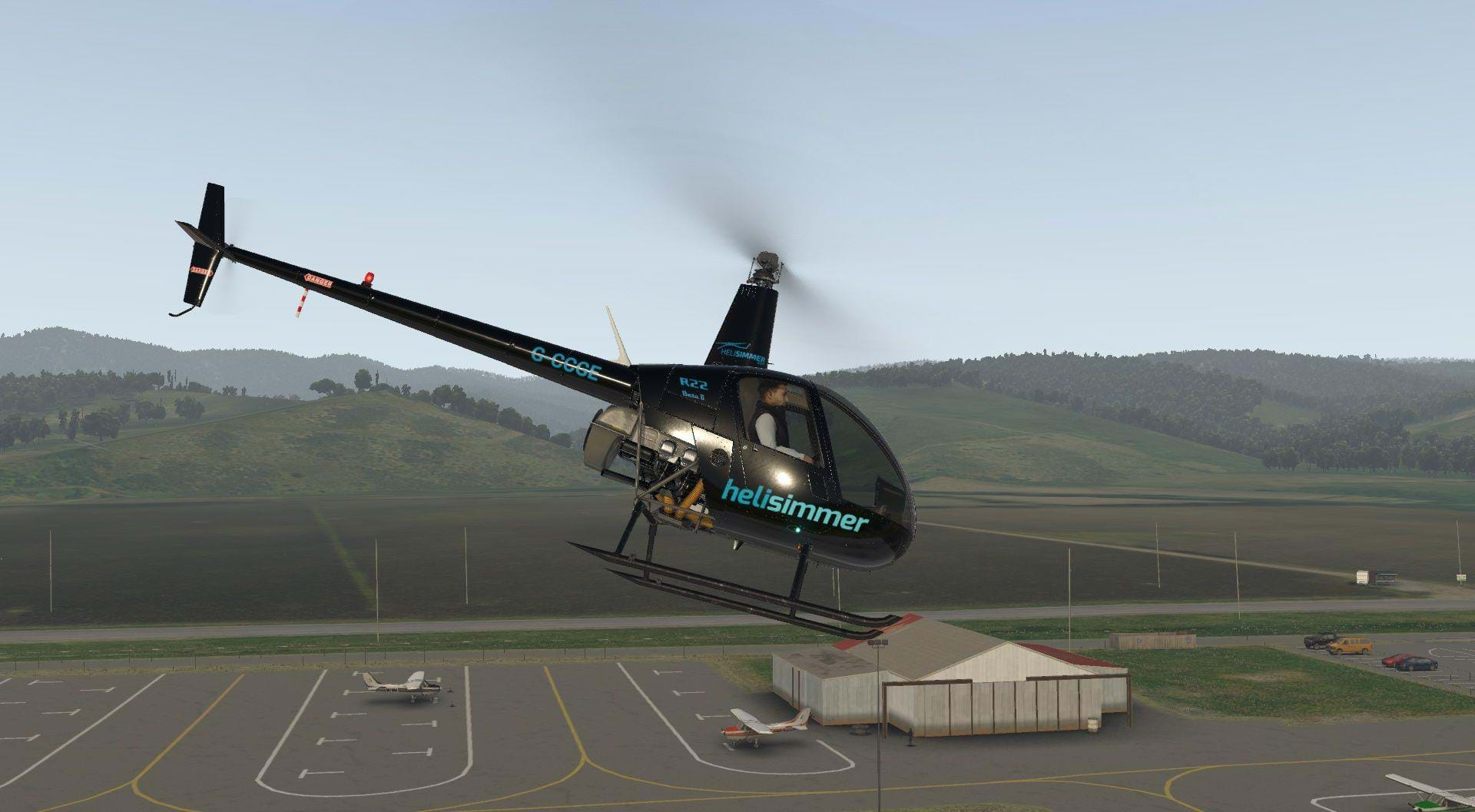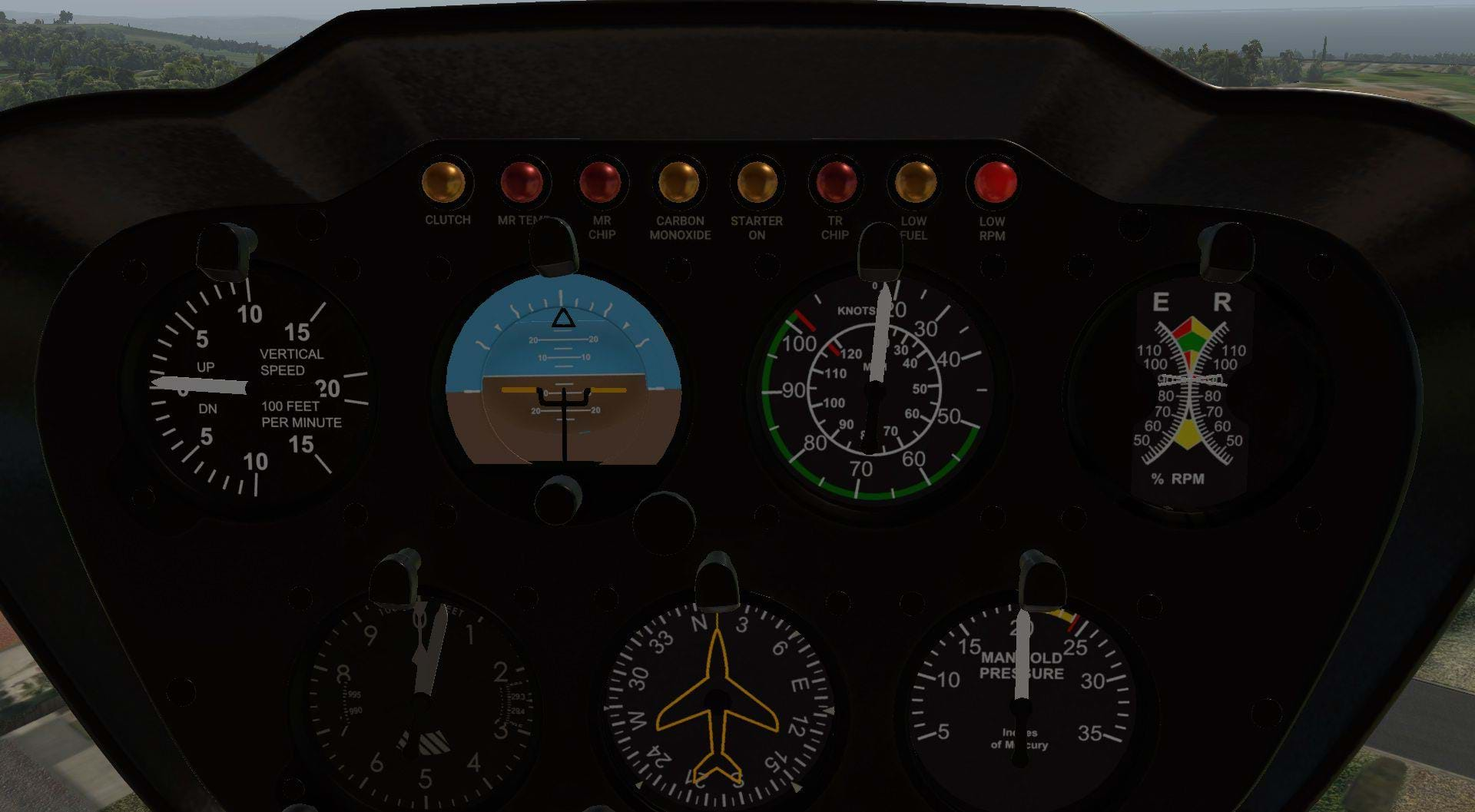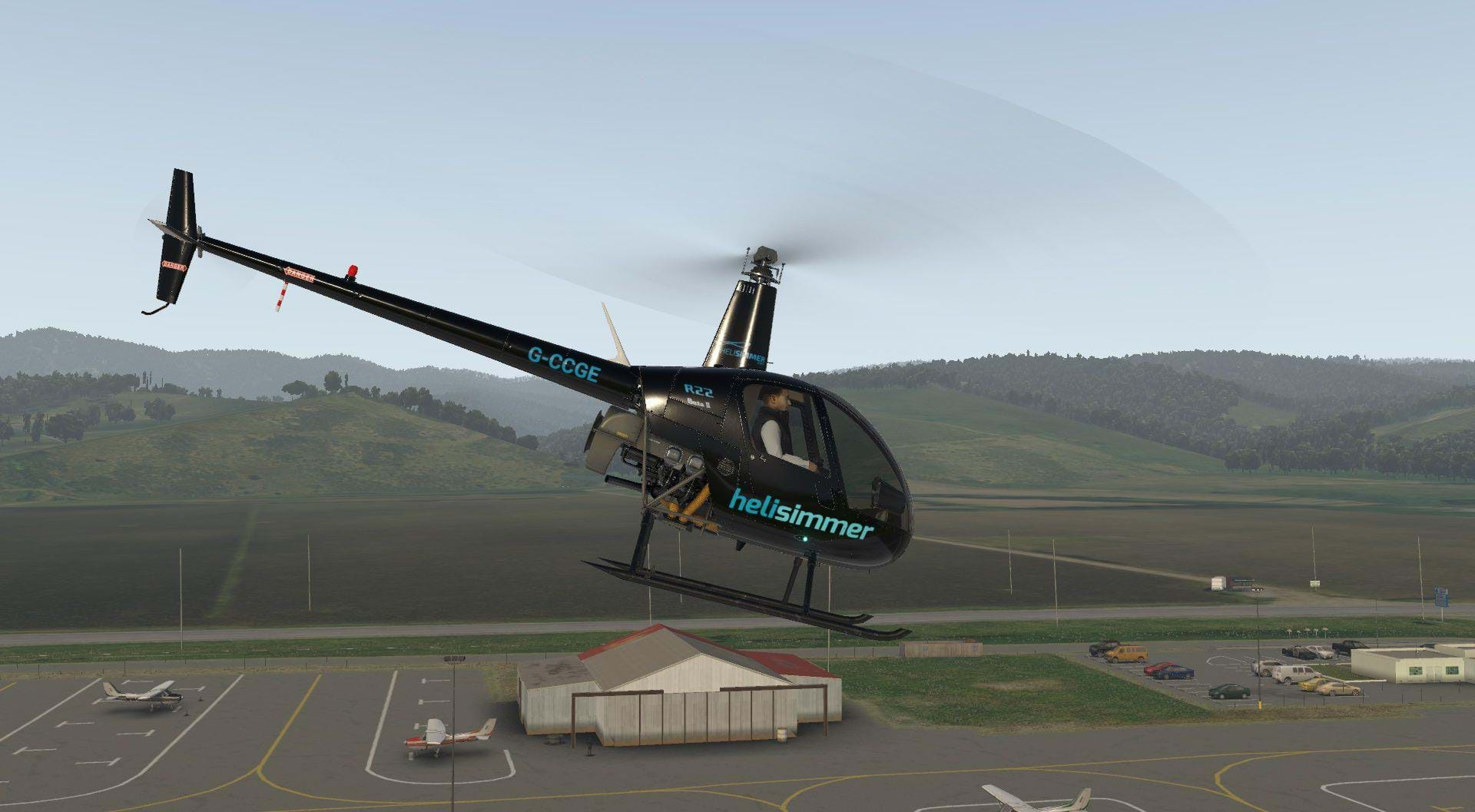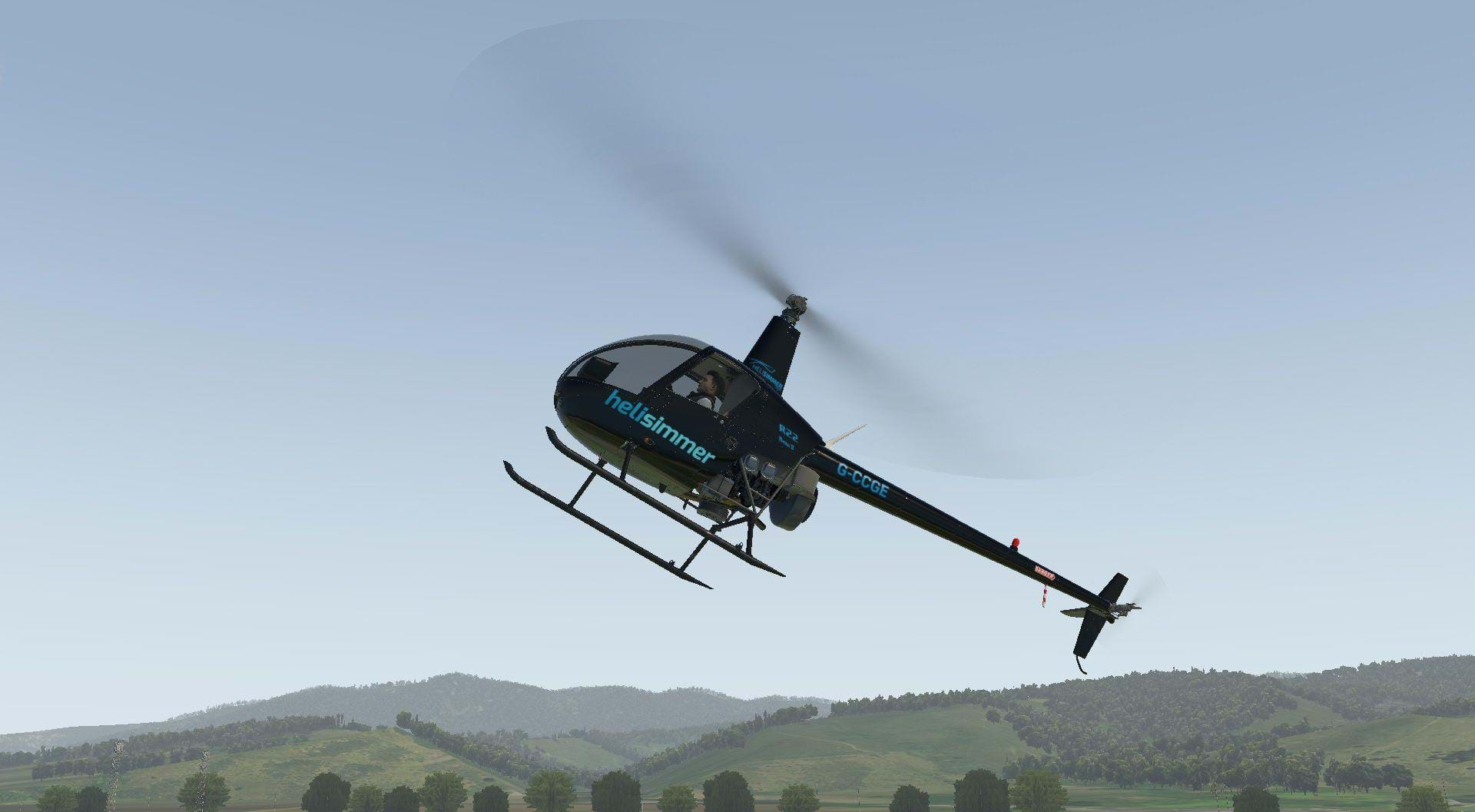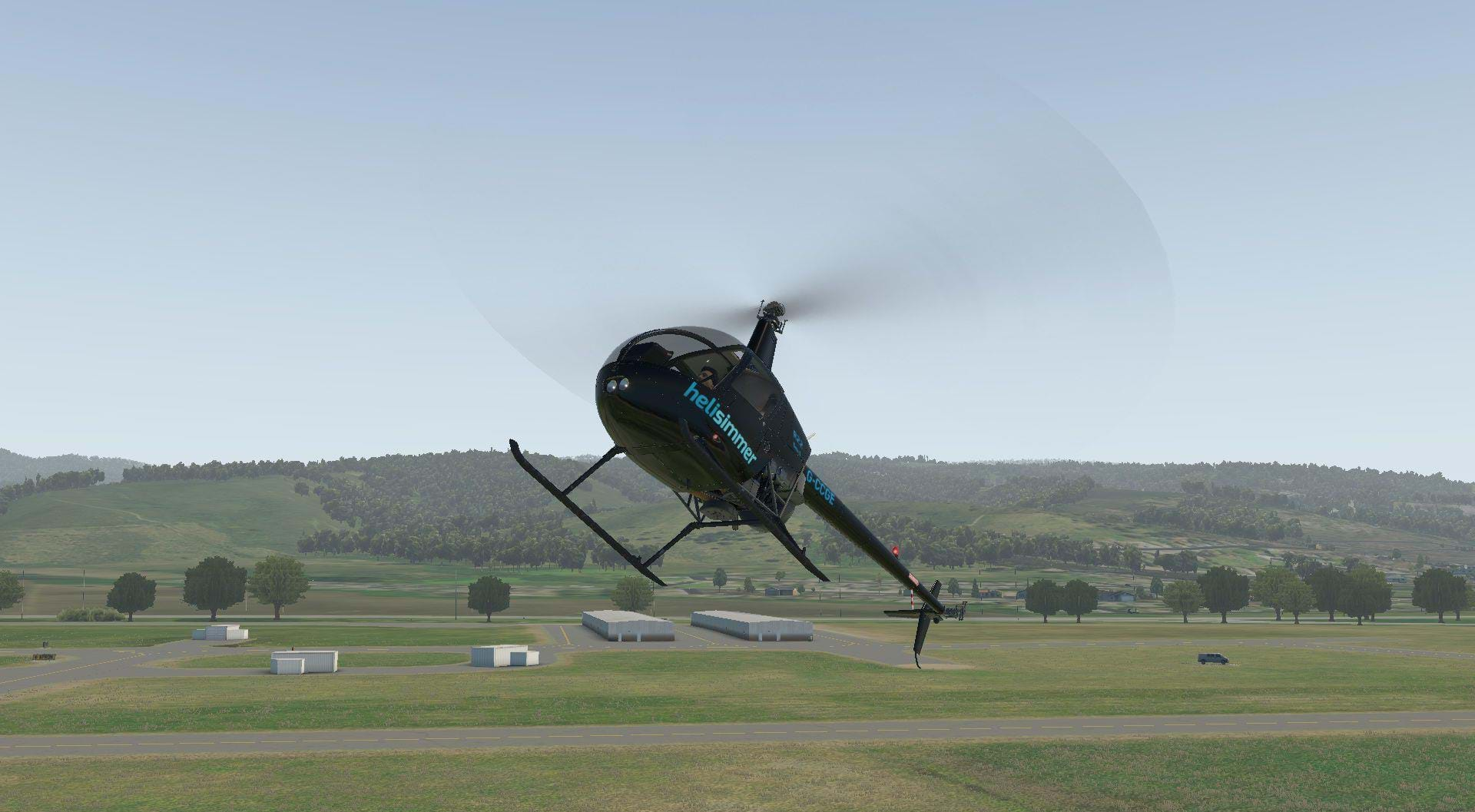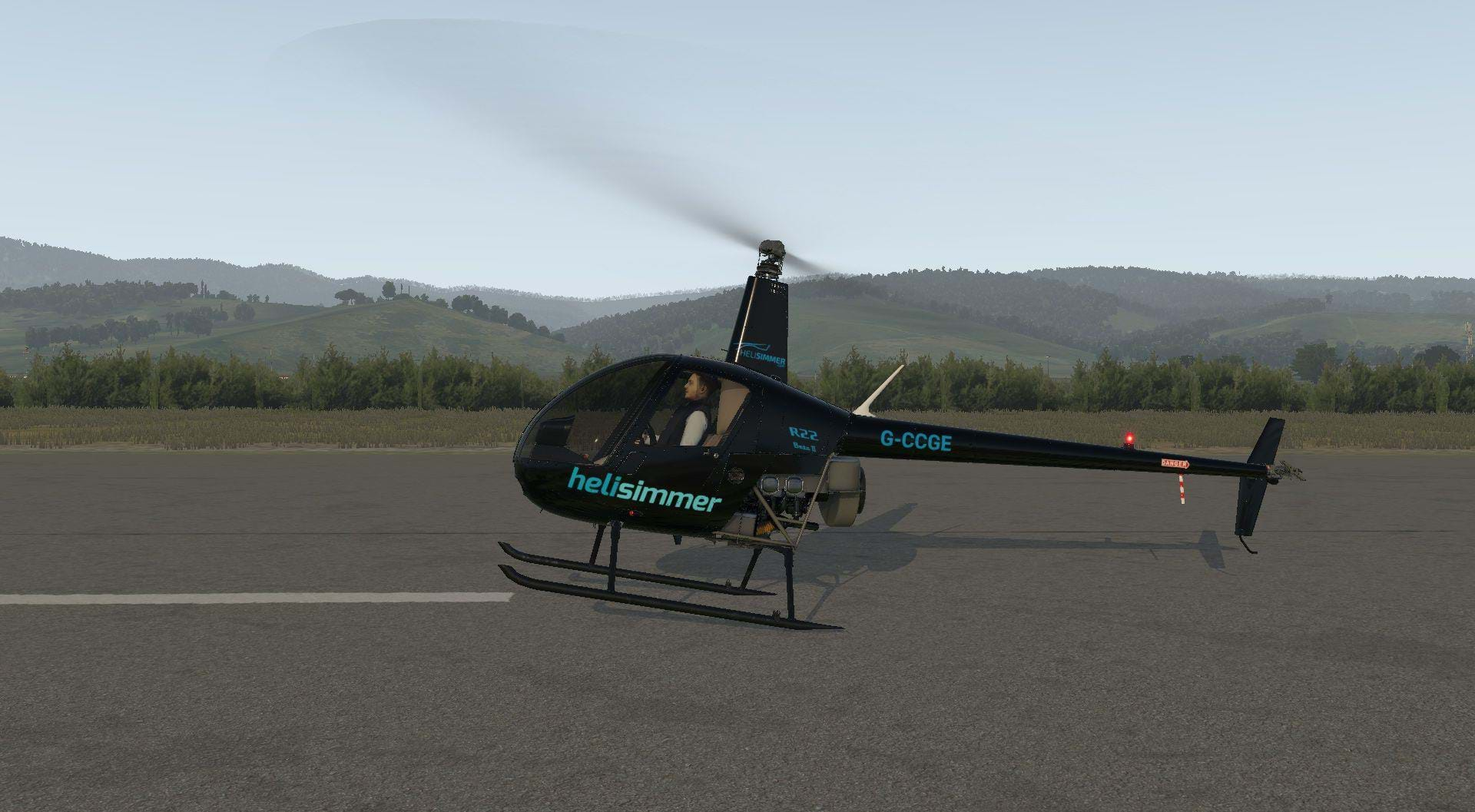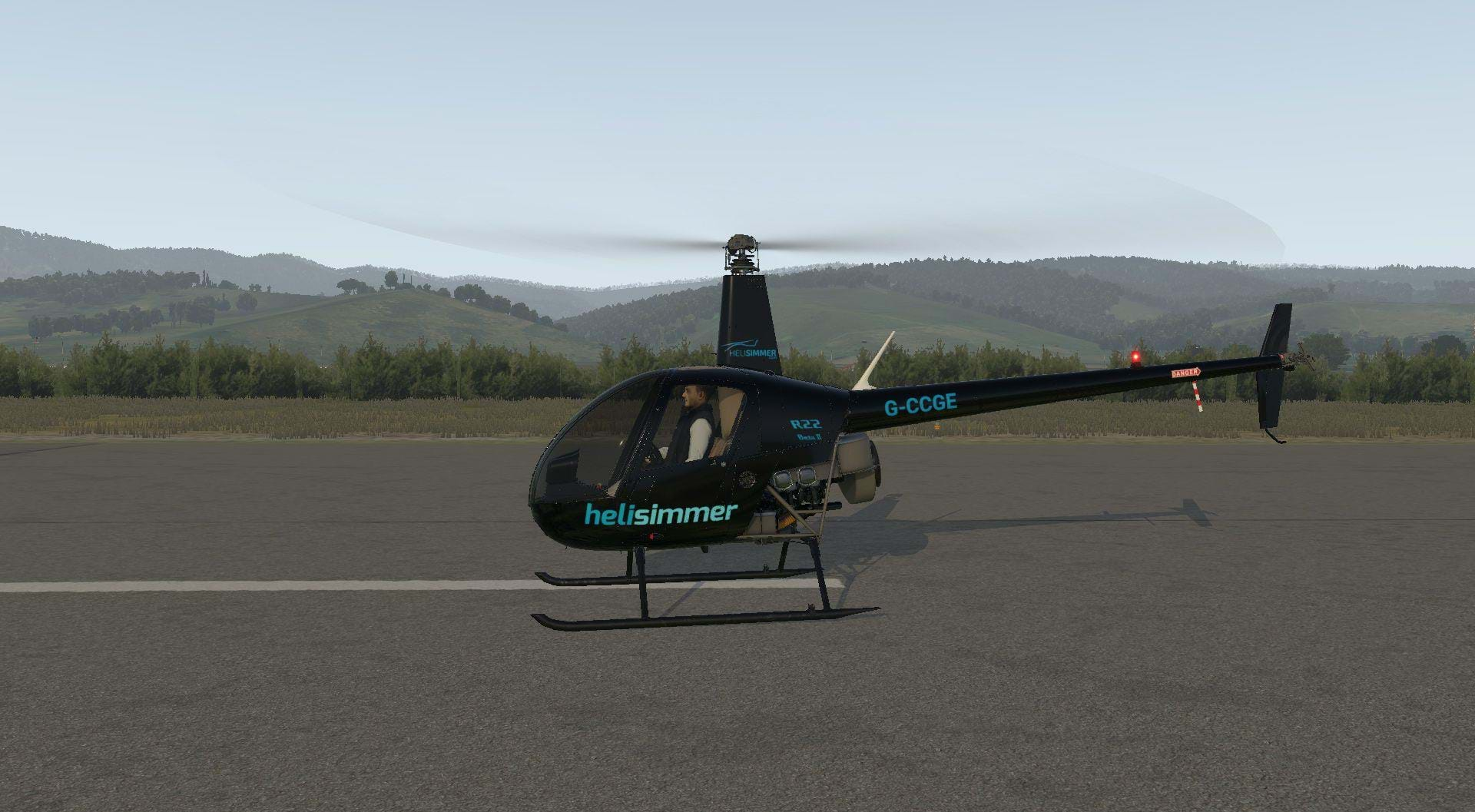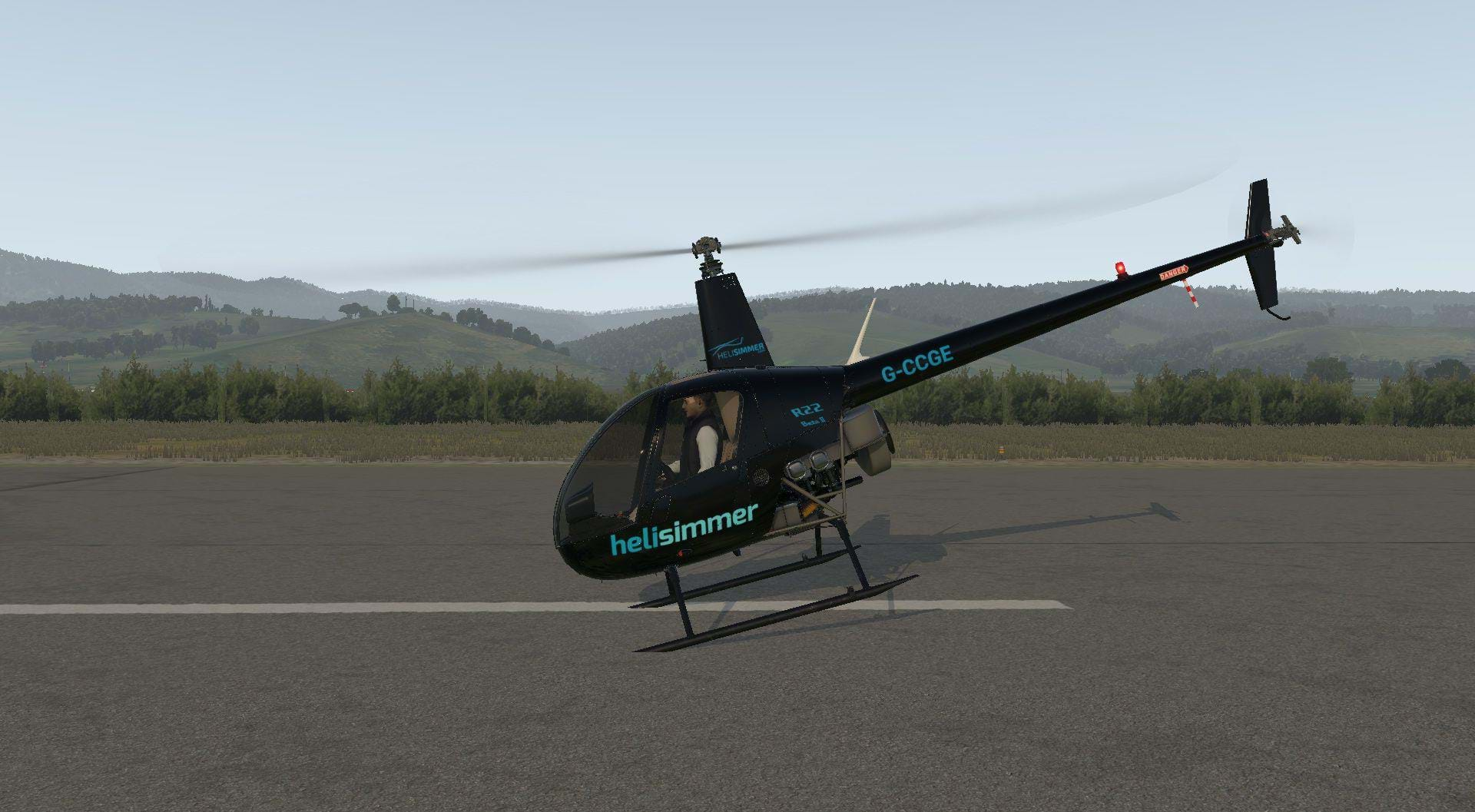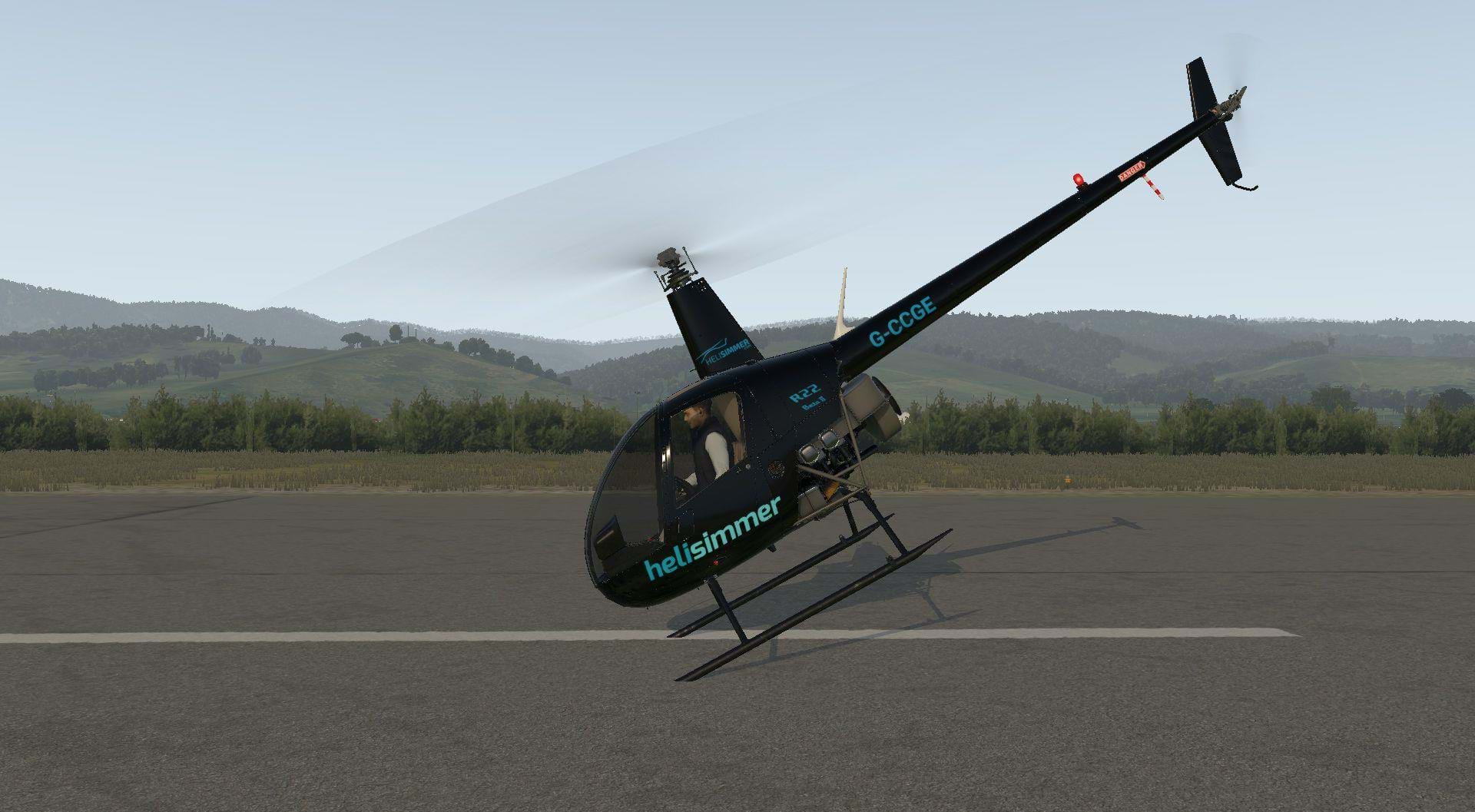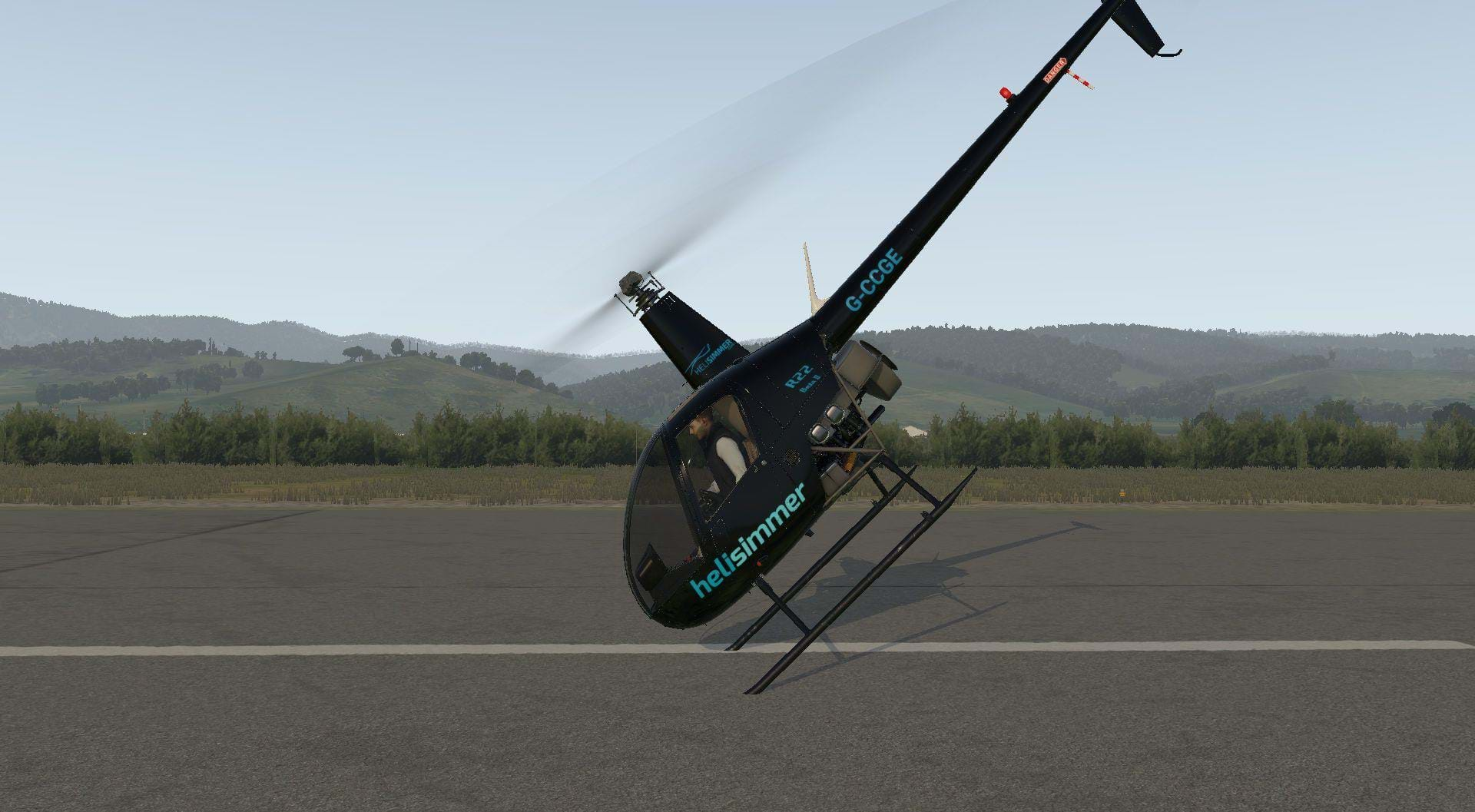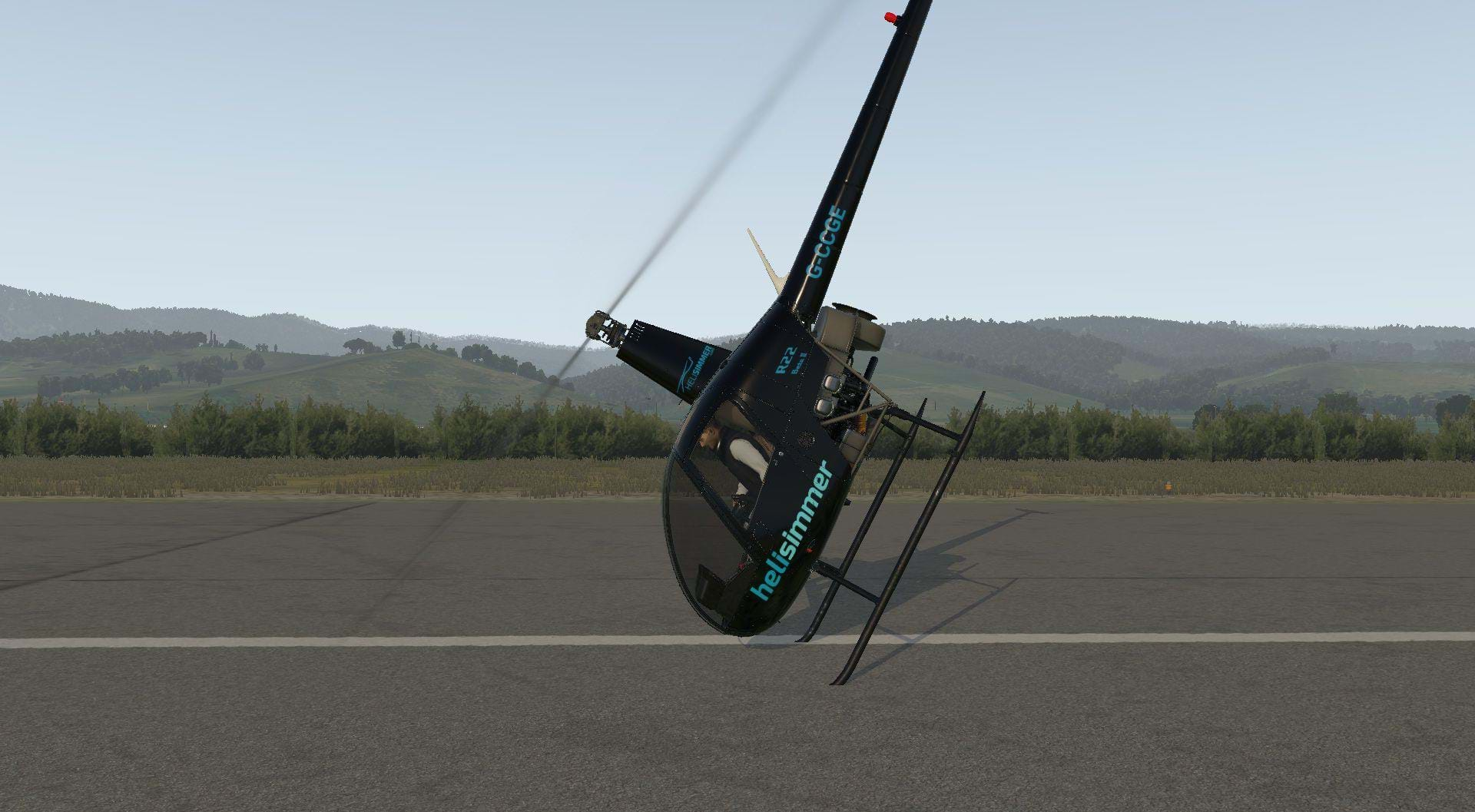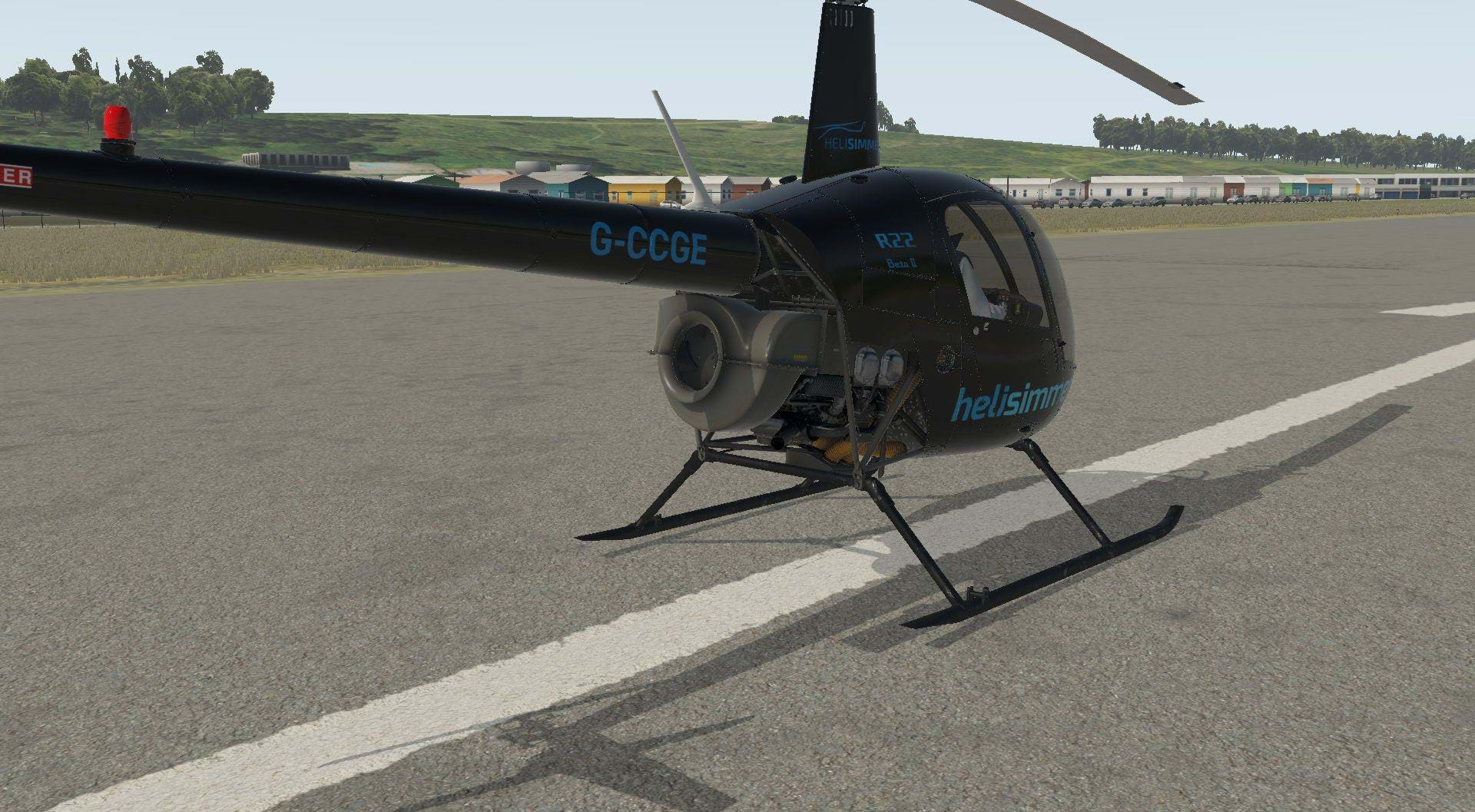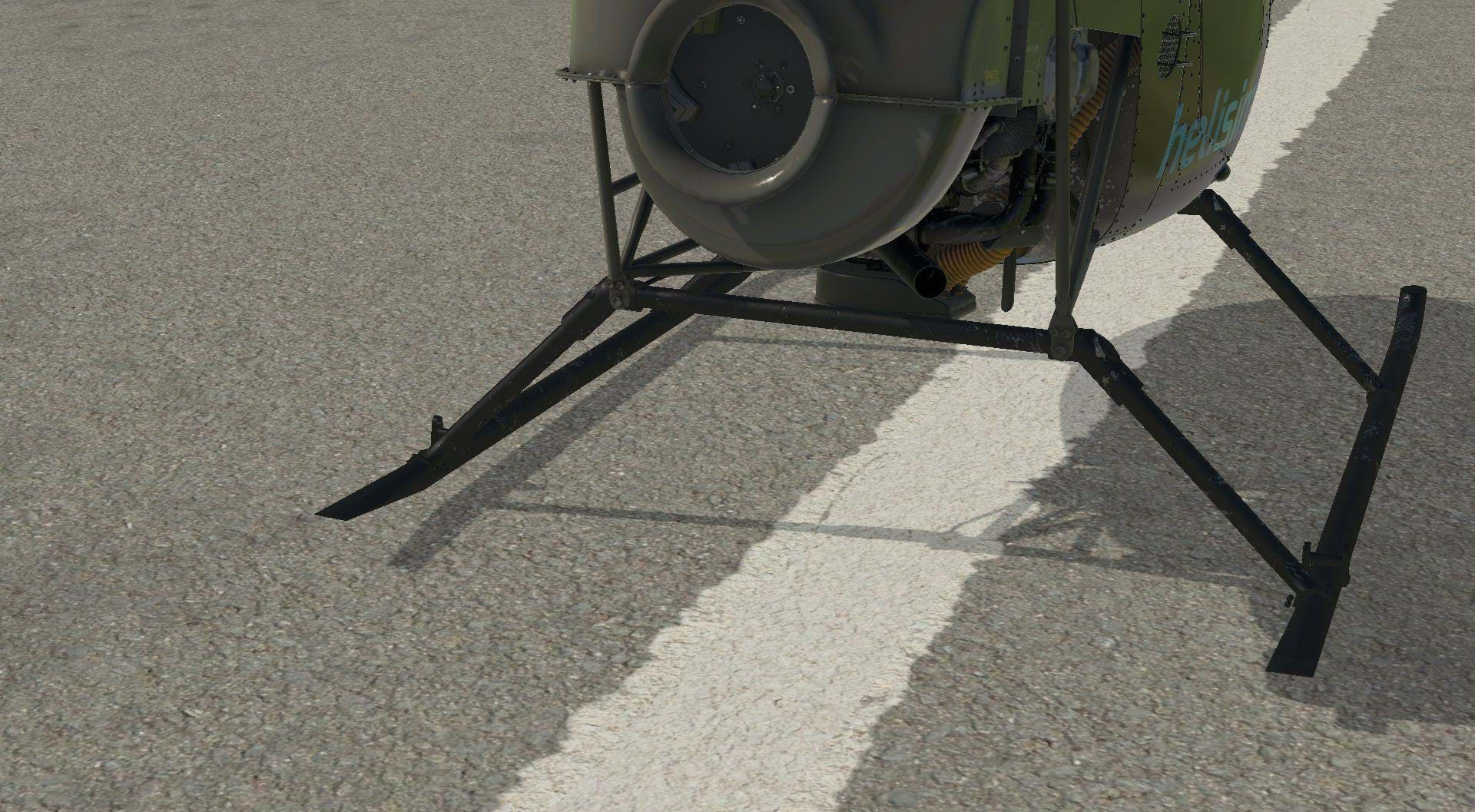The Robinson family of helicopters has enjoyed a sudden boom in completed and announced projects for X-Plane lately. In actuality, we didn’t have any Robinsons for X-Plane 11 at all, all of the payware models, DreamFoil’s R-22, and Carenado’s R66 were both designed for X-Plane 10, and were not updated to keep up with the moving target that is X-Plane 11.
Then, seemingly overnight, we get announcements for 2 new models. VSKYLABS released their R66, that was reviewed by fellow HeliSimmer.com contributor Nick Bates, and helicopter new comer Big Tire Productions and their R22.
Big Tire had a big job ahead of them. The R22 is a very popular model, so much so that the DF R22, despite being originally for X-Plane 10 still continues to serve as the go-to Robbie for X-Plane users. Big Tire Productions, previously known for their small airplanes, took on a big task bringing the small helicopter to X-Plane.
So, let’s see how they did.
Installation
This model installs just like any other X-Plane add-on just unzip it into your X-Plane Aircraft folder and you are ready to go.
First Look
I’m not the biggest fan of Robinson helicopters, both in real life and in the virtual space, but I must give credit where credit is due. This is a beautifully done model. The level of detail is nothing short of impressive.
It’s been a while since I’ve been around a R22, even longer since I’ve flown one, so I may not be able to pick out all of the details, or point to any glairing inaccuracies like I usually do when I review models, but I have to admit, that this 3D model is extremely well done. There isn’t much for customization options, but you can take the doors off via click spots in the virtual cockpit.
The main and tail rotors are very well done. The rotor hub has details all the way down to the hardware. Robinson rotor systems are very simple, but that doesn’t mean they lack intricacies that this model captures beautifully.
The cockpit of this model was really impressive. On par with the best payware models out there right now. The upholstery leather and fabric textures are very convincing, as well as the seat belts and flight controls.
One thing I did find odd about the cockpit (besides the fact that the pilot is flying in loafers, a neck tie, cold weather vest, absolutely ZERO hearing protection and refuses to wear a seat belt) is that the co-pilot side cyclic is still installed on the T-bar. There’s no co-pilot collective, no copilot pedals, but for some reason the cyclic on that side is still installed. Odd choice in my opinion, as that would create a potential hazard if the other controls were removed to accommodate a passenger who wasn’t a student or qualified pilot.
Another thing I noticed about the controls was the governor switch on the collective isn’t physically modeled, but there are click spots there to manipulate it. This isn’t a huge deal because you’ll never see the governor switch while flying, but with so many other details in this model, it’s surprising that this was left out.
The instrument panel is extremely well modeled. My favorite thing about it is not only is it well modeled, but it doesn’t look brand new. It looks like a helicopter that’s been well maintained, but also well used.
It’s a hard balance for a developer to find. Personally, perfect looking cockpits and models look a fake and unconvincing to me. I’ve only flown a brand-new helicopter a hand full of times in real life, even those aircraft had some imperfections, especially in the cockpit where there is constant activity.
The imperfections on the instrument panel and especially the center console make it feel more like an actual aircraft that has character and is unique. No two helicopters are the same, and little details like this make it seem like this copy of the Big Tire R22 is unique (I know its identical to everyone else’s but that’s the feeling I get).
The R22, like other small piston powered helicopters has an engine that’s exposed. It’s bolted to the fuselage frame were all the world can see it. This is a challenge to developers because that’s a lot of stuff to show accurately. This model shows off its simulated Lycoming 4 cylinder engine in fantastic detail for all to see.
The Big Tire R22 manual states that it has a Lycoming O-320, but this model is presented as a R22 Beta II which is fitted with a O-360, not sure why there’s a discrepancy here, I’m also not sure which engine they modeled as far as performance goes, but as you’ll see later in the review, that won’t really matter.
The screenshots don’t actually do it justice. There are lots of animations like the drive belts, flywheels and impeller. The PBR texturing of the various engine components are very convincing.
Sounds
The sounds are a mix of good and bad. Big Tire got the sounds of the start and idling engine down pretty well. Low rotor RPM warnings sound good, and the switch clicks aren’t too loud.
Sounds of the aircraft in flight are ok, but it gets a little weird when the doors are off. When you have the doors off, the sounds get louder, which is to be expected, but if you stick you head out of the window (as I often do) the sounds revert to the doors on sound for some reason.
The part of the sound modeling I didn’t like was the sound of the rotor at low rotor RPM. This is most evident when you’re engaging the clutch or when dragging the rotor RPM down during a hovering autorotation.
This model sounds like they just took the sound of the rotor RPM in flight and slowed it down dramatically into a low “Whop, Whop” sound. It’s actually kind of annoying. The rotor sounds also seem to be directly tied to the engine RPM which is problematic when doing autorotations.
Usually the first sign that you’re about to overspeed the rotor is the aural cue of the blades spinning faster. If the engine is at idle, the only thing you hear change is engine noise and not rotor noise.
Systems
It’s been a while since I’ve flown a R22 in real life, and my R22 POH has long since been lost. But most piston engines have a similar start sequence, and this one wasn’t hard to figure out. The documentation that comes with the Big Tire R22 is slim.
It’s 4 pages long and is basically just an abbreviated checklist. The R22 isn’t a complex machine, so I wasn’t expecting a Falcon 4.0 size manual, but this limited documentation would be very disappointing and frustrating for someone new to helicopters.
The addition of a cockpit diagram would really help new users, even if it was just a screen shot of the cockpit with all of the switches and dials needed for engine start highlighted and labeled.
Startup is pretty straightforward. The low rotor warning horn goes off if you lift the collective with the battery off. I don’t remember if the warning horn is connected to a battery hot bus in real life, because that’s the only way you would get that indication.
It very well be in order to provide low rotor RPM warnings in the case of an alternator failure, but it’s been a while since I’ve flown a Robbie so I don’t quite remember if this is accurate or not.
Like most if not all piston powered light helicopters, the engine is started with the rotor disengaged. That’s an important detail that Big Tire got right. The R22 has a much simpler rotor engagement than the H-300C that I trained on this is modeled pretty well here too.
The rotor engagement is simple and straight forward however it’s initiated by closing the guard on the clutch switch that is fixed in the engaged position. To disengage the clutch and rotor system, you just lifting up the guard, which in real life would only give you access to the switch. This isn’t all that realistic, but doesn’t actually take much away from the experience.
The governor on this model is kind of weird in that it behaves more like a mechanical correlator than a governor. The governor does an OK job of managing rotor RPM but not engine RPM. The engine RPM will drop until a certain point and then the RPM will kick back up to 100% causing a spike in power and a yaw moment on the aircraft.
I found that flying this model is smoother with the governor disengaged and managing the rotor RPM manually with my twist grip. It’s not the way to fly a real Robbie and would be a challenge for someone without a twist grip collective, but it’s smoother than the included governor.
Flight Dynamics
Full Disclosure, it’s been a very long while since I’ve flown an actual R22. Well over 16 years actually, so my memory about how that model performs is a bit dated. So, I can’t go too far into the particulars of how the Big Tire R22 compares. But there are a few things about this models performance and handling that really stand out.
Picking this model up to a hover isn’t too terribly difficult, but it’s not super stable like other Robison models on the market (Lookin’ at you VSKYLABS!). The cyclic and pedal response seems appropriate for a helicopter this size. Its general handling is good at a hover.
In cruse flight this model is very well behaved provided that you’ve found the sweet spot with your throttle power spikes aren’t kicking the aircraft around in the yaw axis due to the confused governor.
Like I mentioned earlier in the review, the R22 Beta II is powered by a Lycoming O-360, but the model’s documentation says it’s a O-320. This doesn’t matter because this model seems to be powered by one of Tony Starks’ arc reactors.
At lower weights and outside air temperatures, I was able to pull the collective almost all the way up, open the throttle all the way up overriding the governor, and push the cyclic all the way to the forward stop and maintain level flight all while keeping the rotor RPM in the middle of the green arc.
Yes, cold temps make for better engine performance, but you should almost never have to move your cyclic all the way until it hits the stop in level flight.
At higher temperatures, I was able to just ignore the low rotor horn, pull the collective all the way up, throttle full open and peg the airspeed indicator in level flight with the rotor and engine RPM sitting happily at 90%, all this with the manifold pressure just shy of the yellow arc.
Even with the rotor RPM at 90% there was no discernible difference in cyclic or tail rotor authority which is far from what I would expect from an actual helicopter.
When doing autorotations in this model the biggest thing I noticed was how well it autos. Too well, actually. This model seems to just float, the rate of decent even though it indicated 1500 FPM at times felt much slower than that.
Trading off a little bit of airspeed and decelerating a bit nets disproportionally large reductions in rate of decent. The rate of decent was so slow I hardly felt the need to do a declarative flare at the bottom. In some cases I didn’t flare, but just raised the nose to a level attitude and just cruised down the runway at 20 feet above the ground for about 200 feet. This type of behavior isn’t very realistic.
Doing autorotations in this model brought to light another issue.
Skid friction.
This Model has the stickiest skids of any X-Plane helicopter I’ve ever tried. Any autorotations in this model must be done with zero or minimal ground run or the aircraft will nose over. The problem seems to be with the toes of the skids.
As soon as they touch the ground they virtually dig in and hit the brakes, causing this model to tip right over nose first and flip onto its back, even if you put in so much aft cyclic you would chop off the tail boom in real life.
The skids have so much friction that even running landings are near impossible if you touch down at normal rates of decent for a running landing. I can’t be positive, but it might have something to do with the fact that the heels of the skids never touch the ground.
Conclusion
This was Big Tire Productions first attempt at a helicopter for X-Plane, and they have been 100% up front about what their goals were for this project.
This was a learning experience for their team to learn about modeling helicopters and explore the market. Which is exactly what this model feels like: a very good first attempt.
Now, that isn’t to say that a user can’t have a good time with this model. This would be great model to explore new scenery with, or for just a nice traffic pattern aircraft. It’s a good generic helicopter model, but maybe not the best R22 simulation.
I sincerely hope they continue to pursue helicopters, even if sale numbers aren’t what they expected or hoped for. There are a lot of the lessons from this project they can use to produce better ones in the future.

